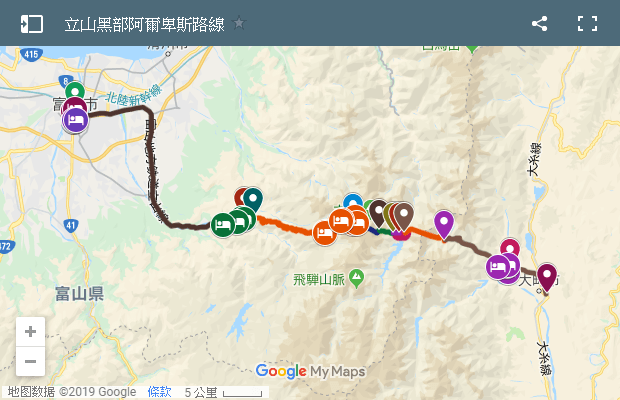Tateyama Kurobe 2025 Opening Dates, Transportation, Attractions, Luggage Delivery, and Travel Guide
Tateyama Kurobe Alpine Route is a scenic mountain route located in the Chubu and Hokuriku regions of Japan. This tourist route uses six different mountain transportation methods to traverse the Tateyama (Mount Tate) and Kurobe Gorge in Toyama Prefecture, hence the name Tateyama Kurobe, also known as Kurobe Tateyama. Tateyama Kurobe is one of Japan’s most popular tourist routes. Due to its high altitude, it is closed during the winter months due to heavy snowfall, and is only open for about seven and a half months each year.
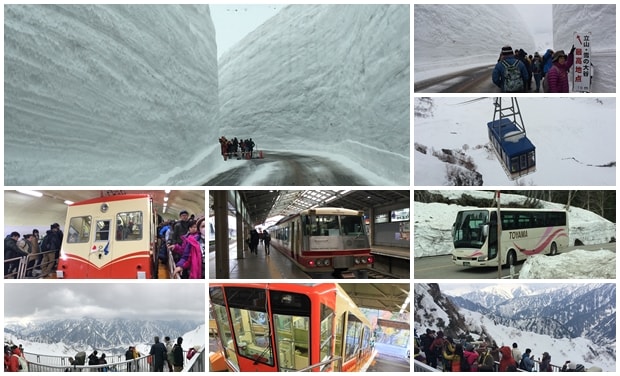
My first visit to Tateyama Kurobe was in November, but unfortunately, it was closed due to heavy snowfall. The second time, I finally made it, and it was shortly after the route opened in late April, just in time to see the spectacular 19-meter-high snow walls of the Snow Otani. I also stayed overnight at Tateyama.
During my second visit, I spent a lot of time researching and planning the trip. Here, I will share the information I gathered and my travel experiences to help those planning to visit.
Since there is a lot of content, this travel guide will be divided into six articles:
- First article (Part 1: Tateyama Kurobe Alpine Route Transportation, Station Facilities, Attractions, Travel Tips, and Opening Dates) (this article), introducing the basic information of the Tateyama Kurobe Alpine Route, including opening dates, location and scope, seasonal highlights, transportation methods, station facilities, main attractions, and the time required for the trip;
- Second article (Part 2: Purchasing Tateyama Kurobe Tickets, Passes, JR PASS, and Reservation Guide), introducing the types and prices of Tateyama Kurobe Alpine Route tickets, how to purchase tickets online, and various JR Passes or bus passes that include Tateyama Kurobe Alpine Route tickets;
- Third article (Part 3: Tateyama Kurobe Travel Routes and Itinerary Recommendations), recommending several route designs for visiting Tateyama Kurobe and itineraries for exploring Kurobe Tateyama and other attractions in the Chubu and Hokuriku regions;
- Fourth article (Tateyama Kurobe Snow Otani Travel Guide), introducing the facilities and travel tips for the Tateyama Kurobe Snow Otani;
- Fifth article (Alpine-Takayama-Matsumoto Area Tourist Pass: Purchase, Exchange, Usage, and Travel Guide), introducing how to purchase, exchange, and use the “Alpine-Takayama-Matsumoto Area Tourist Pass“;
- Sixth article (Tateyama Kurobe Accommodation Recommendations: Tateyama Hotel Stay Experience + Toyama Hotel Recommendations + Omachi Onsen Ryokan Recommendations), introducing recommended accommodation locations for visiting Kurobe Tateyama, including a stay experience at the Tateyama Hotel in Murodo.
Table of Contents
Tateyama Kurobe 2025 Opening Dates
Tateyama Kurobe is one of the snowiest regions in Japan, with the summit of Tateyama, at 3,015 meters, covered in snow year-round. Therefore, the Tateyama Kurobe Alpine Route is not open all year. It is closed from late November to mid-April due to snowfall and snow accumulation, and is only open from mid-April to late November for about seven and a half months.
The opening dates of the Tateyama Kurobe Alpine Route are generally the same each year, around April 15, and the closing date is usually December 1, although it may vary slightly due to weather conditions. The 2025 opening date is April 15, 2025, and it will close on November 30, 2025.
Pre-Trip Information: Location, Scope, Conditions, Temperature, Clothing, Luggage, Travel Methods, Time Required, and Seasonal Highlights
The Chubu region of Japan is home to several high mountains, collectively known as the Japanese Alps (named after the European Alps). Tateyama, located in Toyama Prefecture, is part of the Northern Alps, also known as the Hida Mountains, hence the name Tateyama Kurobe Alpine Route, commonly referred to as Tateyama Kurobe.
1. Location, Scope, and Conditions of the Tateyama Kurobe Alpine Route
Most of Tateyama Kurobe is located in Toyama Prefecture, with a small part in Nagano Prefecture. The starting point of the Alpine Route is Tateyama Station at the western foot of the Tateyama Mountains. From west to east, it passes through Bijodaira, Midagahara, Tengudaira, Murodo, Daikanbo, Kurobedaira, Kurobe Dam, and finally reaches Ogizawa in Nagano Prefecture. The route is approximately 35 kilometers long, with an elevation difference of nearly 2,000 meters. If you start from Toyama City in Toyama Prefecture and end at Shinano-Omachi in Nagano Prefecture, the total length is close to 90 kilometers, as stated on the official website.

The following Google map shows the locations of various mountain transportation, stations and attractions on the Tateyama Kurobe Alpine Route:
Most of the Tateyama Kurobe Alpine Route is located on highlands and mountains at an altitude of over 1,000 meters. Murodo is the highest point on the route, at 2,450 meters above sea level. Due to the high altitude, some people may worry about altitude sickness. However, even at the highest point of Murodo, the altitude is only around 2,400 meters, so the likelihood of altitude sickness is very low unless you have severe hypertension or anemia. Of course, if you plan to hike to higher altitudes, that’s a different story.
Below is a map showing the altitudes of the main locations along the Tateyama Kurobe Alpine Route:
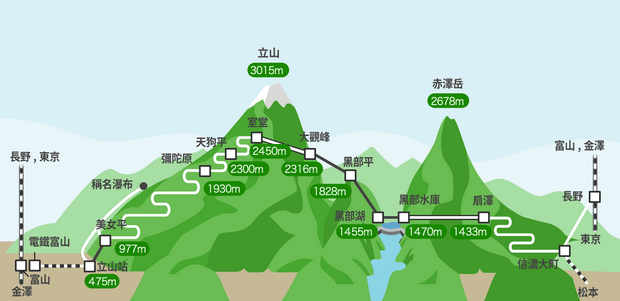
Due to the high altitude and low air pressure, if you bring sealed food packages up the mountain, you may notice that the packaging expands.
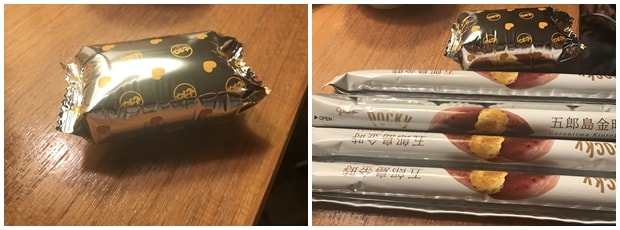
2. Travel Methods and Time Required for the Alpine Route
The Tateyama Kurobe Alpine Route is a mountain sightseeing route, with most attractions located at altitudes above 1,000 meters. However, you don’t need to hike unless you want to. Most of the time, you will be taking various mountain transportation methods to move from one location to another, and then exploring the small area around the station and enjoying the natural scenery of Tateyama and Kurobe Gorge from observation decks. It’s not strenuous at all.
You can start your journey from either end of the Alpine Route (Tateyama Station or Ogizawa) and plan your route based on your time and other travel arrangements. For example, you can start from Tateyama Station and travel the entire Alpine Route to Ogizawa, or vice versa. Alternatively, you can start from one end, explore, and then return to the starting point. If you have enough time, you can also stay overnight at a mountain hotel.
The total travel time for the six transportation methods on the Tateyama Kurobe Alpine Route is 95 minutes. Including waiting time, the minimum time required for transportation from Tateyama Station to Ogizawa is 2 hours. If you start from Tateyama Station and return to Kurobe Dam, the round-trip transportation time, including waiting, is approximately 3.5 hours. If you start from Ogizawa and return to Murodo, the round-trip transportation time is about 2 hours.
Below is a map from the official website showing the travel times for the six transportation methods on the Tateyama Kurobe Alpine Route. Additionally, the Toyama Chihou Railway from Toyama Station to Tateyama Station takes about 70 minutes, and the bus from Ogizawa to JR Shinano-Omachi Station takes about 35 minutes, or 15 minutes to Omachi Onsen. If you start or end your journey at these locations, you need to factor in these travel times.

In terms of sightseeing time, unless you plan to hike at Murodo, Midagahara, or Bijodaira, the main places where you will spend time are Murodo, Daikanbo, Kurobedaira, and Kurobe Dam. The most time-consuming is Murodo, especially during the Snow Otani season from April to June, where you will need about 2 hours to explore. In summer and autumn, when there is no Snow Otani, you will still need about the same amount of time due to attractions like Mikurigaike Pond and Jigokudani. Kurobe Dam requires about 45 minutes, while Daikanbo and Kurobedaira mainly involve viewing from observation decks, so each place only needs 15-20 minutes. In total, you will need about 3.5 hours for sightseeing. If you spend more time at each attraction, it may take around 4.5 hours.
Including sightseeing time, transportation time, and lunch time, the total time required to explore the Tateyama Kurobe Alpine Route is between 6.5 and 8 hours, depending on your route. Below are the minimum times required for several standard travel routes, including transportation, sightseeing, and lunch time:
- From Tateyama Station to Ogizawa Station – takes 6.5 hours. If starting from Toyama Station and ending at Shinano-Omachi, it takes about 8.5 hours. If you spend more time at each attraction, it may take around 9.5 hours.
- From Ogizawa Station to Tateyama Station – takes 6.5 hours. If starting from Shinano-Omachi and ending at Toyama Station, it takes about 8.5 hours. If you spend more time at each attraction, it may take around 9.5 hours.
- From Tateyama Station to Kurobe Dam and back to Tateyama Station – takes 8 hours. If starting and ending at Toyama Station, it takes about 11 hours. If you spend more time at each attraction, it may take around 12 hours.
- From Ogizawa Station to Murodo and back to Tateyama Station – takes 6.5 hours. If starting and ending at Shinano-Omachi, it takes about 8 hours. If you spend more time at each attraction, it may take around 9 hours.
When planning your route and calculating travel time, be sure to carefully study the timetable for various transportation options. By mastering the arrival and departure times of connecting transportation, you can reduce waiting time during transfers. For more information on planning your trip and route on the Tateyama Kurobe Alpine Route, please refer to the next article: Japan Tateyama Kurobe Travel Guide (Part 2): Tateyama Kurobe Travel Routes and Itinerary Recommendations.
3. Luggage Issues on the Tateyama Kurobe Alpine Route
When traveling the Tateyama Kurobe Alpine Route, you will use various mountain transportation options. Except for the Tateyama Highland Bus, none of these transportation options have space for large luggage. During peak seasons, carrying large luggage on board can be very troublesome and annoying. Therefore, if you have large luggage and need to bring it to a hotel or accommodation on the mountain, it is recommended to use the luggage delivery service to send your luggage to your hotel or service station. Of course, you can also carry backpacks or small travel bags yourself.
In previous years, the luggage delivery service offered various starting and ending points. However, after the pandemic, the service is only available from Toyama City to Shinano-Omachi or Omachi Onsen in Nagano Prefecture, or vice versa. The fee in 2025 is 4,000 yen per piece of luggage, and the service is only available from April 15 to November 3. (Note: The 3,000 yen in the figure below is the price in 2024.)
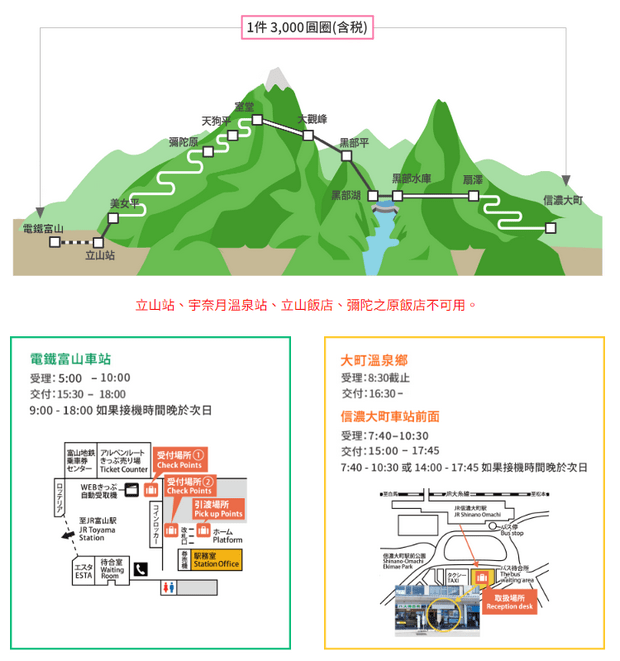
The service station for luggage delivery in Toyama City is located inside Toyama Station on the Toyama Chihou Railway. The luggage delivery acceptance time is from 5:00 AM to 10:00 AM. If you are sending luggage to Toyama Station, the pickup time is from 3:30 PM to 6:00 PM.
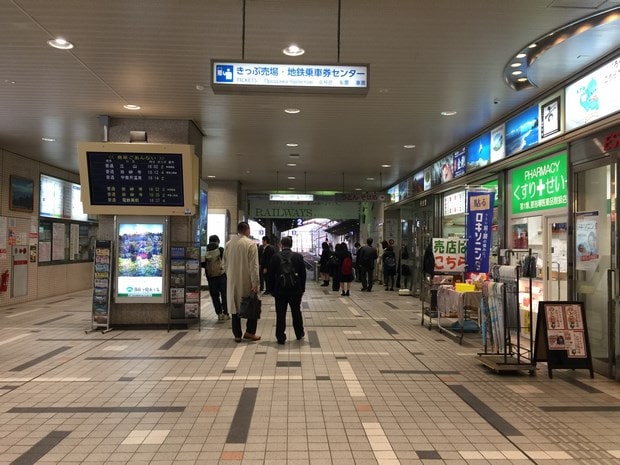
The service station for luggage delivery in Shinano-Omachi is located at JR Shinano-Omachi Station (Note: In previous years, it was located at a shop called Alps Roman Hall next to the station, but the acceptance point has changed starting in 2024). The luggage delivery acceptance time is from 7:45 AM to 10:30 AM, and the pickup time is from 3:00 PM to 5:45 PM.
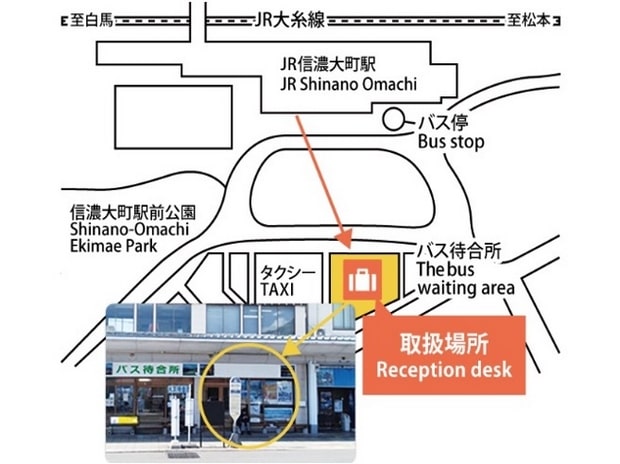
If you are staying at one of the following hotels or inns in Omachi Onsen, you can directly arrange luggage delivery at the hotel or send your luggage directly from Toyama City to the hotel. The hotel’s luggage delivery acceptance time is before 8:30 AM, and the pickup time is after 4:30 PM.
- Kurobe Kanko Hotel
- Tateyama Prince Hotel
- Ryokan Kanoya
- Oribana
- Hotel Yumenoyu
- Ryokusui-tei KEISUI
- Kurobe View Hotel
- ANA Holiday Inn Resort Shinano Omachi Kuroyon
- Alpine Route Hotel
- Hoshino Resorts KAI Alps
- Nanakuraso
- Takenoya
- Kurobe Sun Valley Hotel
- Furusatomura Kogeikan
- Hotel Route Inn Shinano Omachi Ekimae
Each piece of luggage requires a label when using the luggage delivery service. For instructions on how to fill out the label, please refer to the official website of the Tateyama Kurobe Alpine Route.
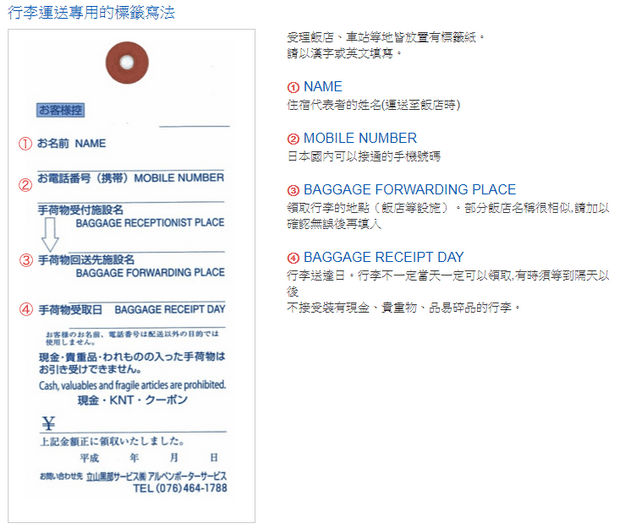
In addition to the luggage delivery service specifically designed for visitors to the Tateyama Kurobe Alpine Route, you can also use the Yamato Transport’s luggage delivery service. The shipping fees for Yamato Transport are similar to the luggage delivery service mentioned above, but it allows you to send and receive luggage from any location, making it much more convenient.
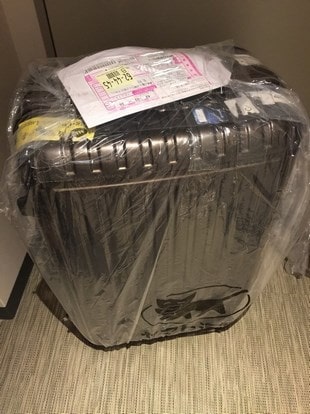
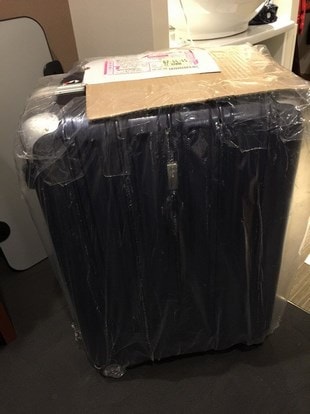
Most hotels in Japan can receive Yamato Transport shipments. If needed, you can request a shipping form from the hotel staff. Each piece of luggage requires a shipping form.
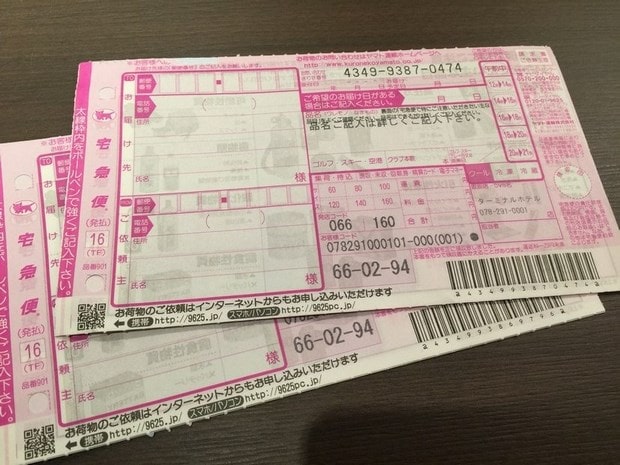
The shipping form only requires three types of information: (1) the postal code, phone number, address, and recipient of the receiving hotel, (2) the postal code, phone number, address, and sender of the sending hotel, and (3) the main items in the luggage. The recipient can be the hotel name, and you can specify “front desk” as the recipient, but you must include the guest’s name and check-in date.
4. Seasonal Highlights of the Tateyama Kurobe Alpine Route
The scenery of Tateyama Kurobe varies with the seasons, so the highlights of your visit will differ depending on the time of year. Below is an image from the official website showing the different monthly views of the main areas of Tateyama Kurobe. White represents snow, green represents flowers and grass, and orange represents autumn leaves.

1. Spring – Snow Wall
Every year from mid-April to mid-June, during the spring season, the Tateyama Kurobe Alpine Route opens for the first period of the year. This is also the peak season for visiting Tateyama Kurobe, especially from mid-April to mid-May. During this period, the snow on Tateyama has not yet melted, so the scenery is dominated by snow. The main attraction is the Snow Wall at Murodo. Additionally, you can enjoy beautiful snowy mountain views from the observation decks at Daikanbo, Kurobedaira, and Kurobe Dam. Our visit to Tateyama Kurobe was in April, one week after the route opened, so the photos in this article show the scenery from April.
However, since Tateyama is still covered in thick snow before the end of June, some of the main attractions at Murodo, such as Tateyama Gyodo no Yuso, Mikurigaike Pond, Jigokudani Observation Deck, and Jigokudani Hot Spring, are still covered in snow and difficult to access. Additionally, mountain climbing activities are not possible during this time.
2. Summer – Mountain Climbing
From mid-June, Tateyama Kurobe enters the summer season. July and August are ideal for mountain climbing. However, since not everyone enjoys mountain climbing, the number of tourists during the summer is relatively low, allowing for a more leisurely experience. Additionally, from late June to mid-October, you have the chance to see the Kurobe Dam discharge. If you enjoy green mountains, clear waters, or hiking, visiting Tateyama Kurobe in the summer is also a great choice. Below is an image from the official website showing the timing of summer in different areas of Tateyama Kurobe. The higher the altitude, the later summer arrives. For example, summer arrives at Murodo in late July.

3. Autumn – Autumn Leaves
Autumn, with its colorful leaves, is another peak season for Tateyama Kurobe, but the number of tourists is not as high as in April and May. Due to the varying altitudes, the timing of the autumn leaves differs across different areas. The earliest autumn leaves can be seen at the highest point, Murodo, usually in mid-September. Below is an image from the official website showing the timing of autumn leaves in different areas of Tateyama Kurobe. The higher the altitude, the earlier the leaves change color.

Due to the significant variation in the timing of autumn leaves at different altitudes, planning a trip to the Tateyama Kurobe Alpine Route in autumn can be tricky. If your main itinerary is to visit Tateyama Kurobe, it is best to go around late September to early October. During this period, you can see autumn leaves in most areas between Kurobe Dam and Daikanbo, as well as between Bijodaira and Murodo. You may also have the chance to witness the Kurobe Dam discharge, and there might even be early snow at Murodo.
If you want to explore Tateyama Kurobe and other tourist spots in the Chubu and Hokuriku regions (such as Takayama, Shirakawa-go, and Kurobe Gorge) while enjoying the autumn leaves, it is recommended to visit in early November. This is when the autumn leaves in the Chubu and Hokuriku regions are at their peak. While you can still see autumn leaves at the base of Tateyama (e.g., Tateyama Station), Murodo will likely be covered in snow. However, during this period, the road from Bijodaira to Murodo may be closed due to snow, so it is best to start your journey from Ogizawa if visiting in November. The transportation from Ogizawa to Murodo mainly consists of ropeways and trolley buses that operate inside tunnels, so heavy snow will not significantly affect your journey.
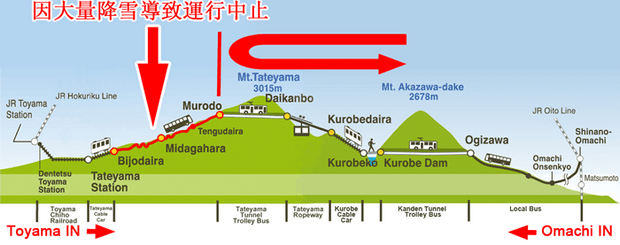
Our first visit to Tateyama Kurobe was in early November. We initially planned to start from Tateyama Station, but due to road closures caused by snow, we could only go as far as Bijodaira. The Tateyama Highland Bus was not operating, so we couldn’t reach Murodo.
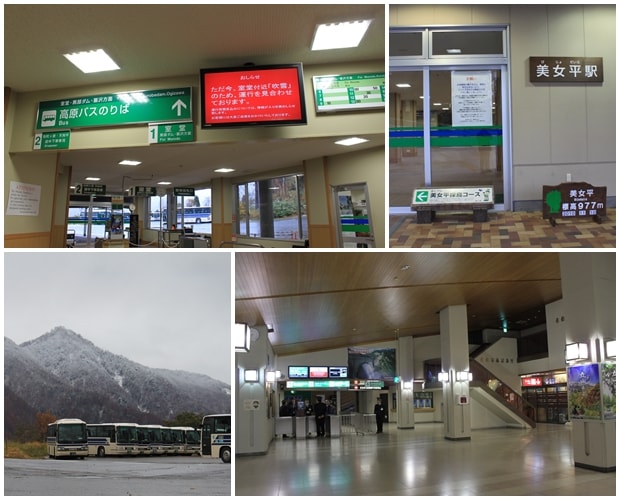
5. Temperature and Clothing Tips for Tateyama Kurobe
Due to its high altitude, the temperature at Murodo on Tateyama Kurobe is about 10 degrees lower than at the base. For example, in April, the average temperature in Toyama City at the base is around 13-14°C, while the average temperature at Murodo is only 2-3°C. Even in summer, the average temperature at Murodo is around 15°C, so it is essential to bring appropriate warm clothing when visiting Tateyama Kurobe. For the average temperatures and clothing tips for each month at Tateyama Kurobe, you can refer to this page on the official website.
Additionally, when visiting Murodo in spring, you will need to walk on snow. If you are prone to slipping, it is best to wear shoes with anti-slip soles. If you find such shoes too bulky, you can wear regular sports shoes and bring a pair of small snow grips (crampons). There are several types of snow grips available, and they can be purchased on Taobao for around $20 to $50.
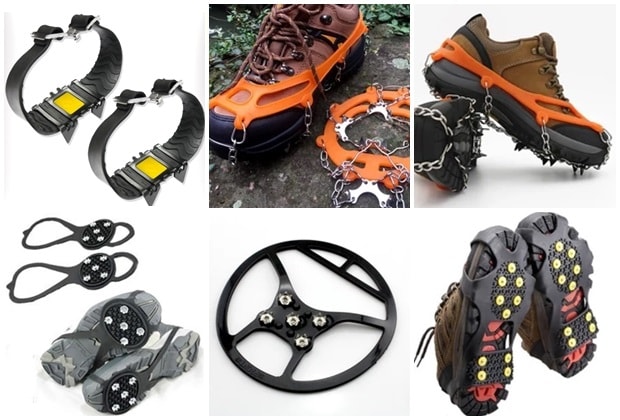
Transportation, Riding Methods, Station Facilities, and Major Attractions Along the Tateyama Kurobe Alpine Route
From Tateyama Station in Toyama Prefecture to Ogizawa in Nagano Prefecture, the entire Tateyama Kurobe Alpine Route uses six different types of mountain transportation to connect the major attractions. If you include the train connecting Toyama City to Tateyama Station and the bus from Ogizawa to JR Shinano-Omachi Station, there are a total of eight transportation methods. These eight transportation methods are:
- Tateyama Cable Car – The cable car from Tateyama Station to Bijodaira
- Tateyama Highland Bus – The bus from Bijodaira to Murodo
- Tateyama Tunnel Trolley Bus – The electric bus from Murodo to Daikanbo
- Tateyama Ropeway – The ropeway from Daikanbo to Kurobedaira
- Kurobe Cable Car – The cable car from Kurobedaira to Kurobe Lake
- Kanden Tunnel Trolley Bus – The electric bus from Kurobe Dam to Ogizawa
- Toyama Chihou Railway – The train from Toyama Station in Toyama City to Tateyama Station
- Ogizawa to Shinano-Omachi Bus – The bus from Ogizawa to JR Shinano-Omachi Station

Since each mode of transportation has its unique features, riding these vehicles is one of the highlights of the Tateyama Kurobe Alpine Route experience. Below, we will introduce each of these transportation methods, as well as the facilities at the major stations and the surrounding tourist attractions.
(1) Tateyama Station and Tateyama Cable Car
1.1 Tateyama Station
The western side of Tateyama Kurobe is in Toyama Prefecture, near major tourist spots such as Toyama City, Kanazawa, Kurobe Gorge, Shirakawa-go, and Takayama. Many foreign tourists visiting Tateyama Kurobe also explore these nearby attractions, so a lot of foreign tourists choose to start their journey from Tateyama Station on the Toyama side. Although Tateyama Station itself is not a tourist attraction, it is the first stop for those starting their journey from the Toyama side, so many people take photos in front of the station as a memento.
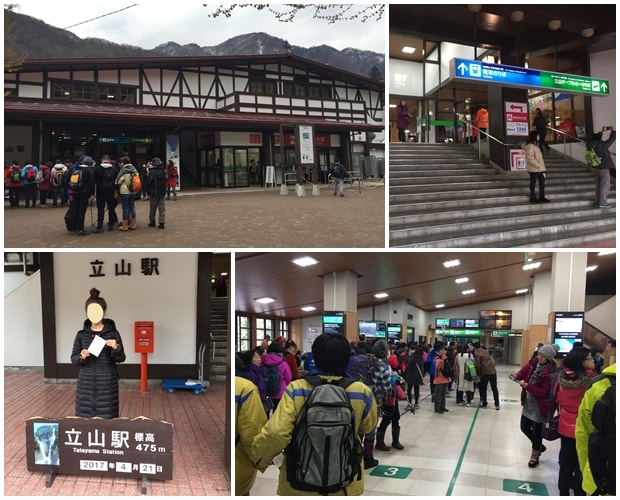
If you are taking the Toyama Chihou Railway from Toyama City to Tateyama Station, the Toyama Chihou Railway’s Tateyama Station and the Tateyama Cable Car’s Tateyama Station are located in the same building, so you don’t need to go outside. If you are driving to Tateyama Station, there is a free public parking lot outside the station. If the free parking lot is full, you can use a nearby paid parking lot.
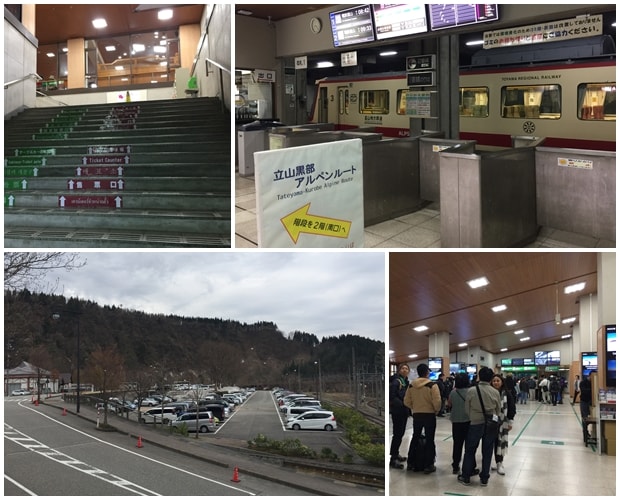
Tateyama Station is not very large. Apart from a souvenir shop, there are no special facilities. The station also has some coin-operated lockers, but the number is limited.
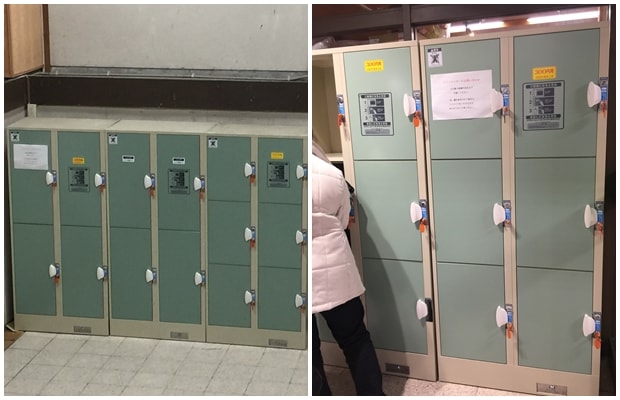
Next to the main entrance of Tateyama Station is the ticket office. If you haven’t purchased tickets for the Tateyama Kurobe Alpine Route transportation in advance, you can buy them here. If you have already purchased tickets online or have the “Tateyama Kurobe, Takayama, Matsumoto Area Tourist Pass” but haven’t exchanged your ride tickets, you can also do so here. (Note: For information on purchasing Tateyama Kurobe Alpine Route tickets and the “Tateyama Kurobe, Takayama, Matsumoto Area Tourist Pass,” please refer to the article “Japan Tateyama Kurobe Travel Guide (Part 2): How to Purchase Tateyama Kurobe Tickets, Passes, JR PASS, and Reserve Ride Times.”)
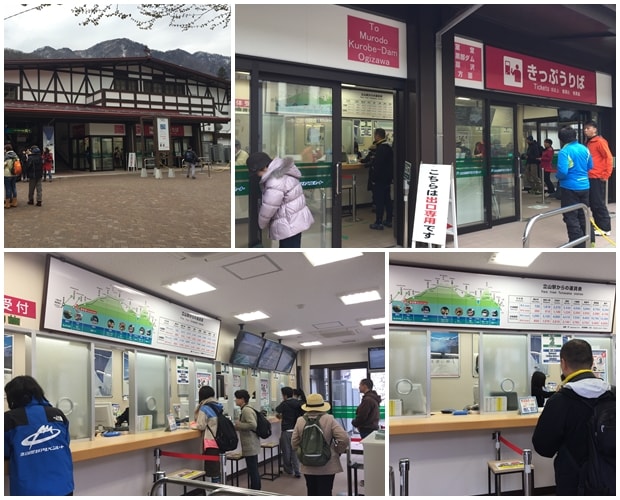
1.2 Tateyama Cable Car
The Tateyama Cable Car is the transportation method connecting Tateyama Station to Bijodaira. The distance from Tateyama Station to Bijodaira is approximately 1.3 kilometers, but the altitude difference between Tateyama Station and Bijodaira is 500 meters. The average slope of the cable car track is 24 degrees, so the cable car’s speed is only about 11 km/h, and it takes about 7 minutes to travel from Tateyama Station to Bijodaira.
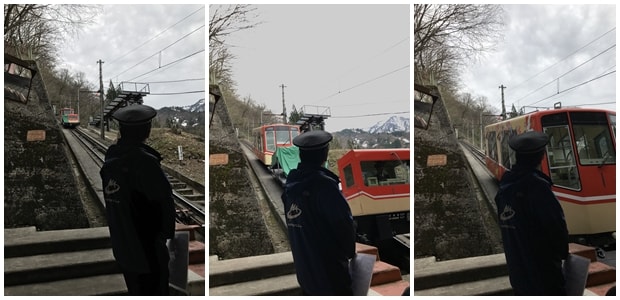
The Tateyama Cable Car has only one car, and its capacity is roughly equivalent to a bus. There is only one track, and there are only two cable cars, so only one car can operate in each direction at the same time. During peak season, the Tateyama Cable Car can get very crowded.
The platform of the Tateyama Cable Car
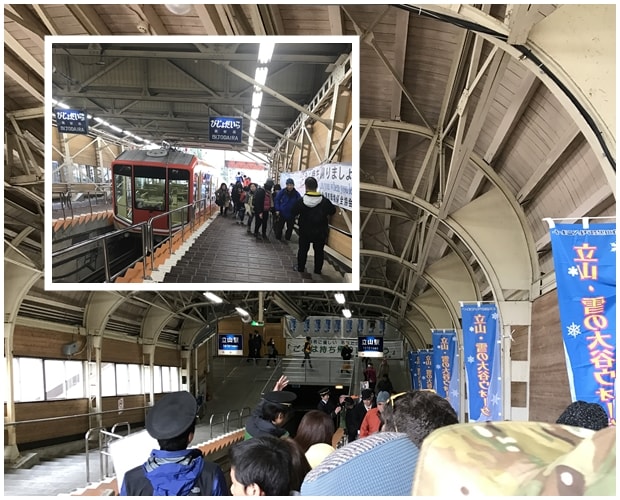
The interior of the Tateyama Cable Car
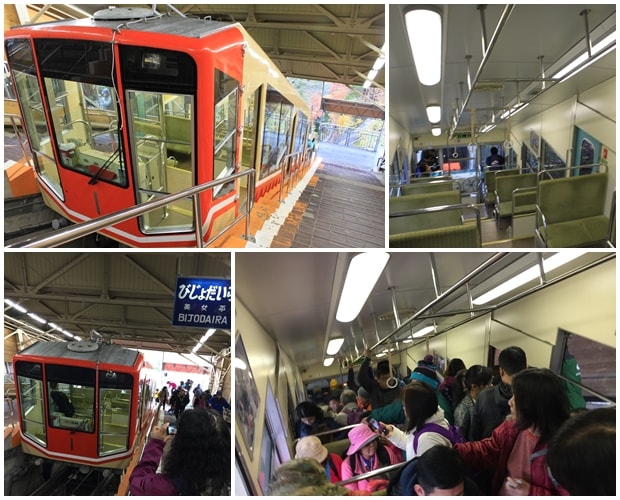
This is the view from the cable car window during our first trip from Tateyama Station to Bijodaira in autumn 2010. Since there were few people at that time, we could enjoy the scenery along the way. However, during this trip, it was peak season, and there were no seats available, so we couldn’t enjoy the view outside.
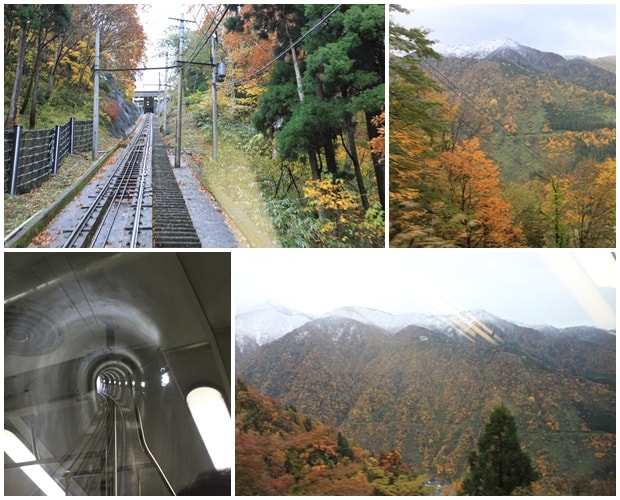
Since only one cable car can operate in each direction at the same time, even during peak season, the Tateyama Cable Car can only depart every 10 minutes. Additionally, due to the limited capacity of the cable car, it is a bottleneck for entering the Tateyama Kurobe Alpine Route. (Note: According to the timetable on the official website, the Tateyama Cable Car departs every 20 minutes, but during peak season, the frequency increases to every 10 minutes.)
To control the number of passengers, you need to purchase a ticket with a designated ride time for the Tateyama Cable Car departing from Tateyama Station. If you have purchased the “Tateyama Kurobe, Takayama, Matsumoto Area Tourist Pass,” which allows unlimited rides on the Tateyama Kurobe Alpine Route transportation within its validity period, you also need to select a ride time for the Tateyama Cable Car when exchanging your ride ticket.
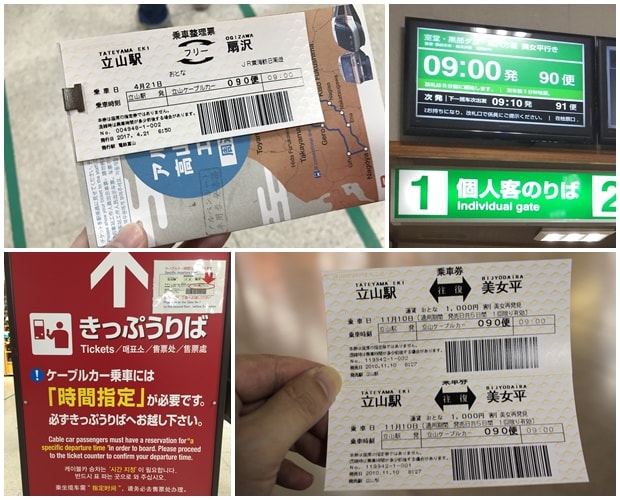
In addition to the Tateyama Cable Car, which requires a reserved time, the Kanden Tunnel Electric Bus from Ogizawa on the Nagano side of Tateyama Kurobe also requires a reserved time. However, if you use various passes (including the “Alpine-Takayama-Matsumoto Area Tourist Pass,” “Tateyama Kurobe Option Ticket,” and “Tateyama Kurobe Alpen Ticket”), you can board the Kanden Tunnel Electric Bus directly without needing to reserve a time. Descending (whether taking the Tateyama Cable Car from Bijodaira to Tateyama Station or the Kanden Tunnel Electric Bus from Kurobe Dam to Ogizawa) does not require a reserved time. For the remaining transportation options, there is no need to reserve a boarding time; as long as you have a ticket (or boarding ticket), you can queue and board.
After purchasing the Tateyama Cable Car ticket or exchanging for a boarding ticket, you can queue at the gate 5 minutes before the boarding time. There are separate gates for individuals and groups, and independent travelers should queue at Gate 1.
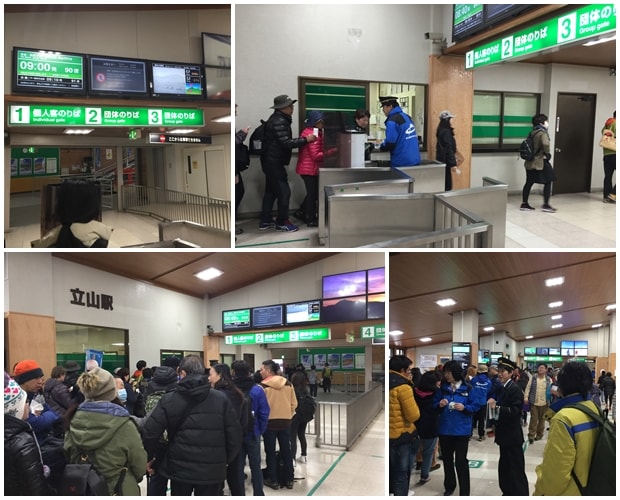
(2) Bijodaira Station and Tateyama Highland Bus
2.1 Bijodaira Station
Bijodaira is a primeval forest with many tall cedar and beech trees, making it a great spot for forest bathing. However, most visitors to Tateyama Kurobe do not stop here and only transfer to the Tateyama Highland Bus at Bijodaira Station to continue to Murodo.
After taking the Tateyama Cable Car from Tateyama Station to Bijodaira Station, you will arrive at the waiting room of Bijodaira Station. The waiting room is not large, and during peak season, you will see a long queue of people waiting to board the Tateyama Highland Bus as soon as you enter the waiting room.
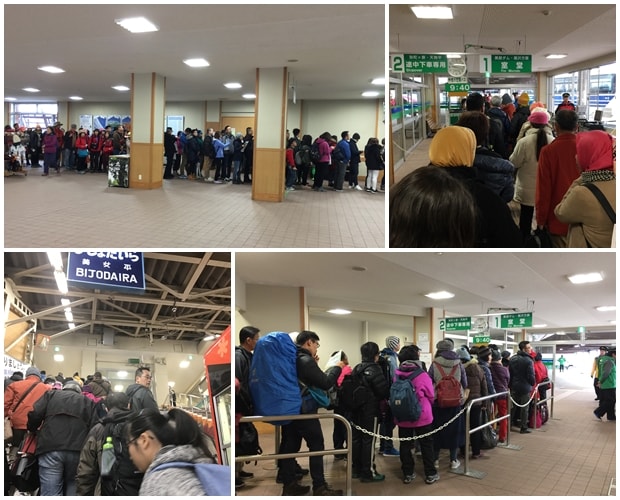
If there is still some time before the bus departs, you can take some photos outside the station to document your visit.
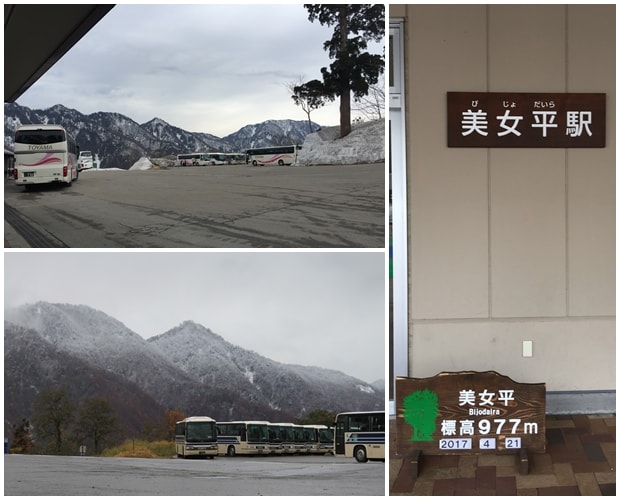
2.2 Tateyama Highland Bus
The departure intervals for the Tateyama Highland Bus are relatively long. According to the official website’s timetable, the intervals between Tateyama Highland Bus departures range from 20 to 40 minutes. However, each departure is not limited to one bus; multiple buses depart simultaneously, so there are enough seats to accommodate all passengers coming up from Tateyama Station via the cable car.
The Tateyama Highland Bus connects Bijodaira to Murodo, the highest point of the Tateyama Kurobe Alpine Route, with an altitude difference of nearly 1,500 meters. The total distance is approximately 23 kilometers, and the average speed is about 30 km/h, so it takes about 50 minutes to travel from Bijodaira to Murodo. In addition to going directly to the final stop at Murodo, you can also get off at intermediate stops such as Midagahara or Tengudaira. If you plan to get off at an intermediate stop, you should queue in a different line when boarding.
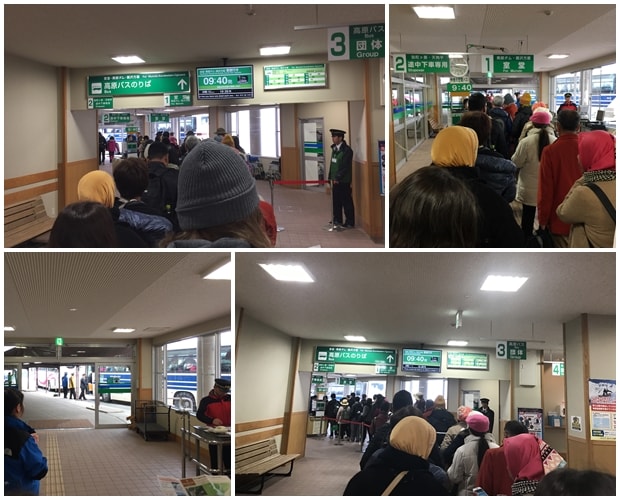
The Tateyama Highland Bus uses large buses with around 40 seats. The buses are equipped with luggage compartments, so if you are carrying large luggage, you can store it in the luggage compartment. However, even though the buses have luggage compartments, carrying large luggage on the crowded Tateyama Cable Car can be troublesome, so it is not recommended to bring large luggage. If you need to carry large luggage, it is advisable to use the luggage delivery service.
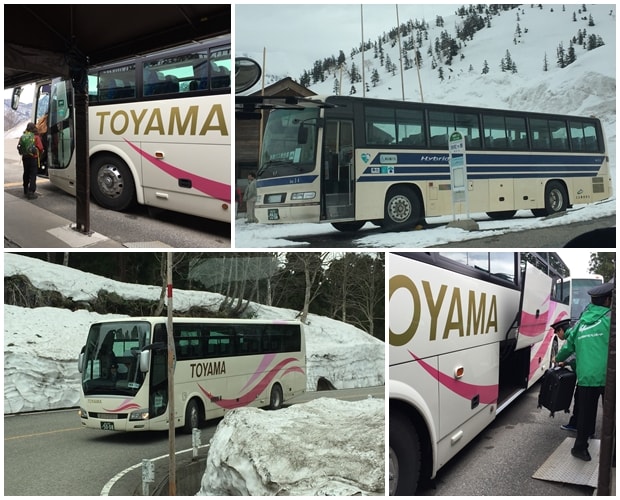
Seat Selection Tip: When taking the bus from Bijodaira to Murodo, most of the scenic spots (such as Shomyo Falls) are located on the left side. Therefore, if you have a choice of seats when boarding, it is best to choose a seat on the left side. Additionally, from mid-April to mid-June, it is ideal to sit in the front row.
We visited Tateyama Kurobe on April 21, about a week after the route opened, which is an ideal time to see the Snow Wall. Fortunately, when we queued for the bus, we were the first to board a new bus, so we chose the front row seats. The view of the snow walls from the front of the bus was much clearer and more impressive than through the side windows.
Shortly after departing from Bijodaira, the bus passed through areas with snow on both sides of the road, and the snow became thicker as we progressed.
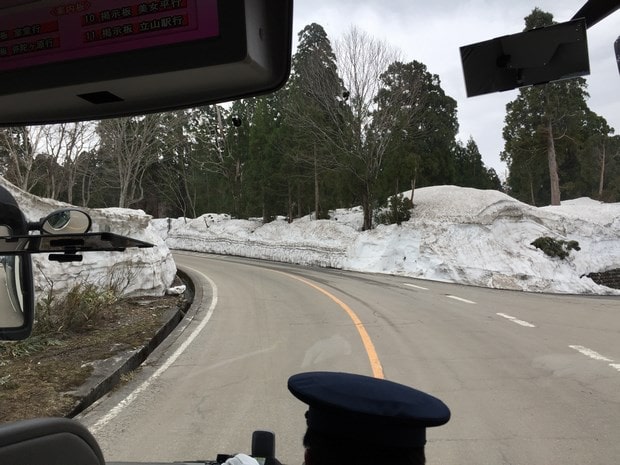
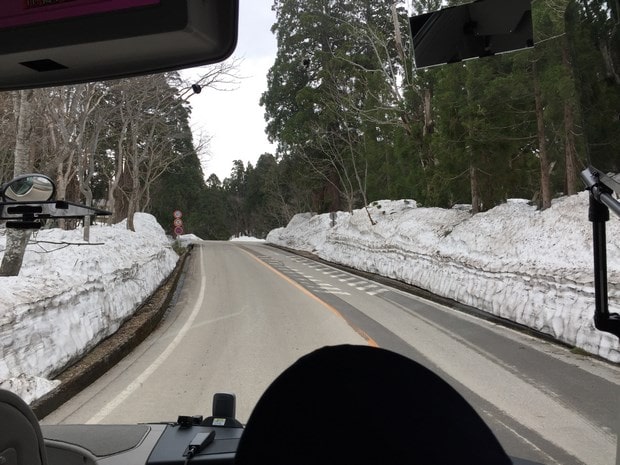
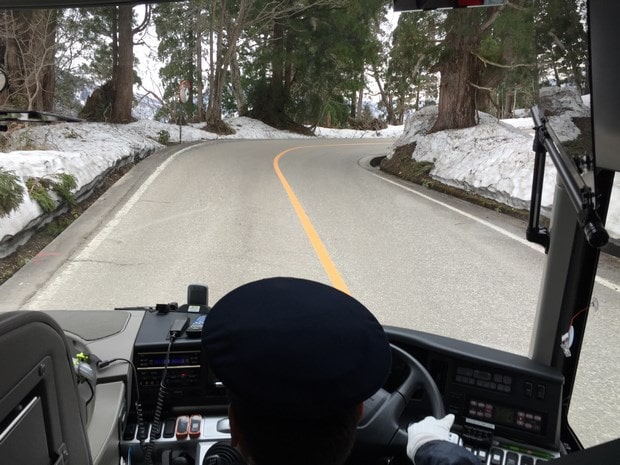
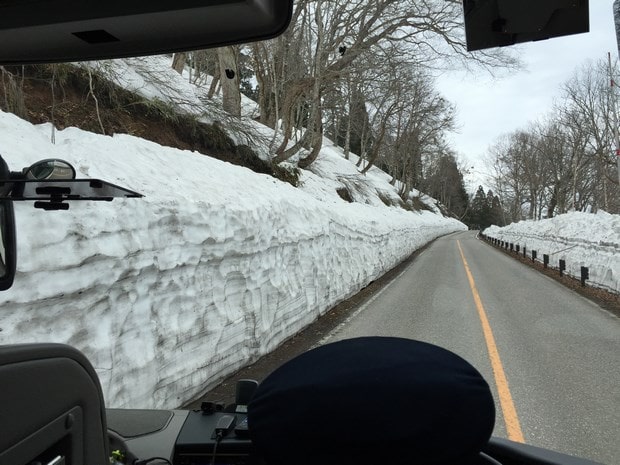
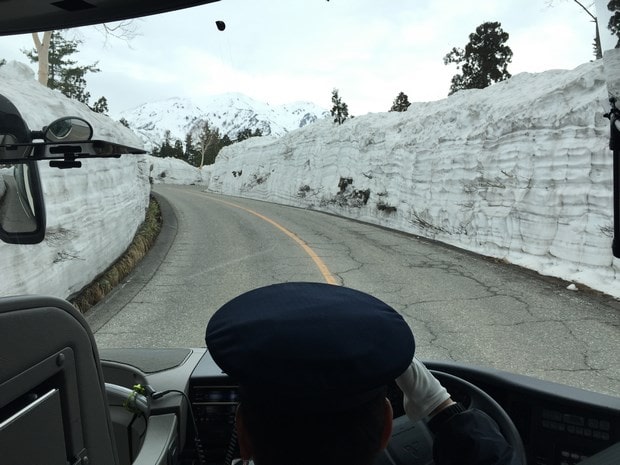
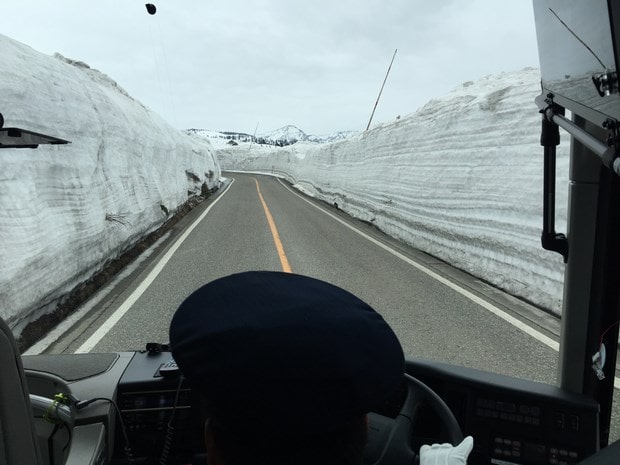
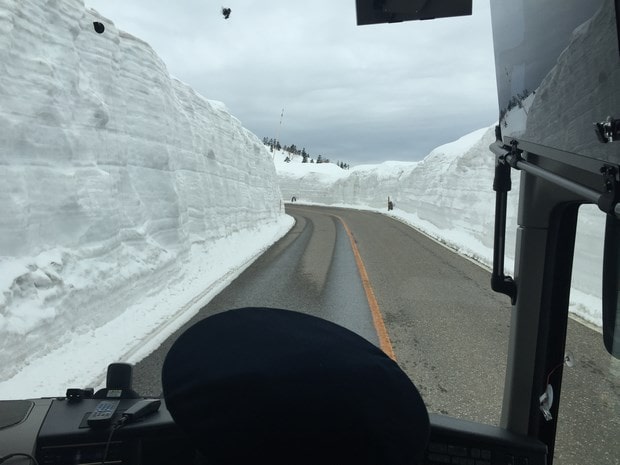
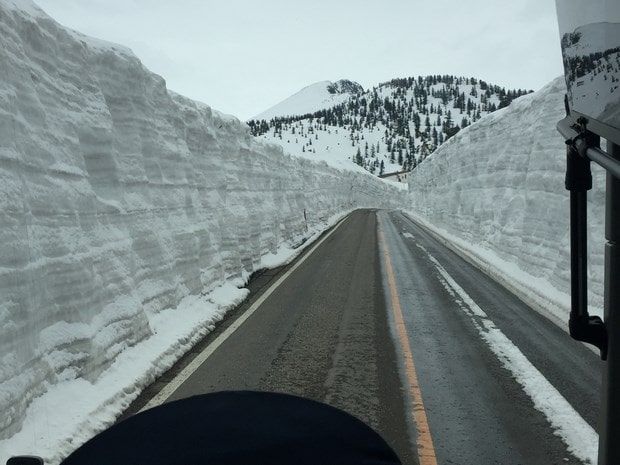
The road connecting Bijodaira to Murodo is Prefectural Route 6, also known as the Tateyama Kurobe Alpine Route. Since general vehicles are not allowed on this road, only the Tateyama Highland Bus operates here. During the journey, you will often encounter buses coming from Murodo to Bijodaira.
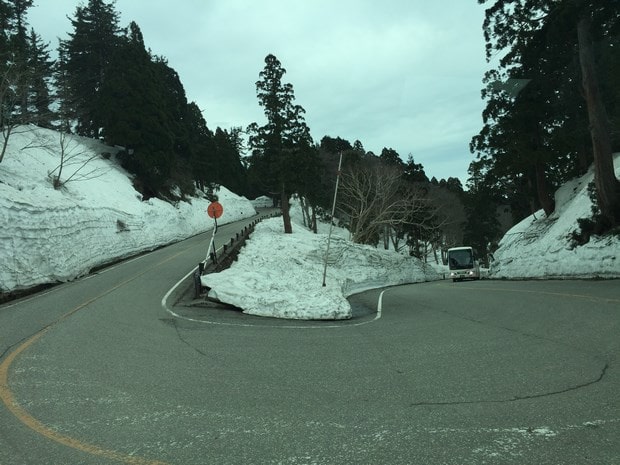
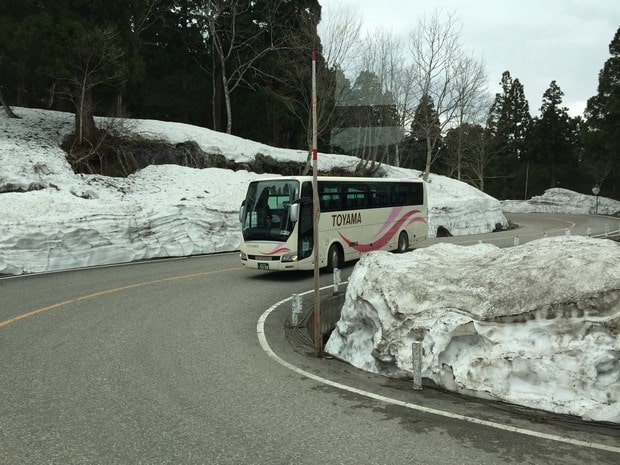
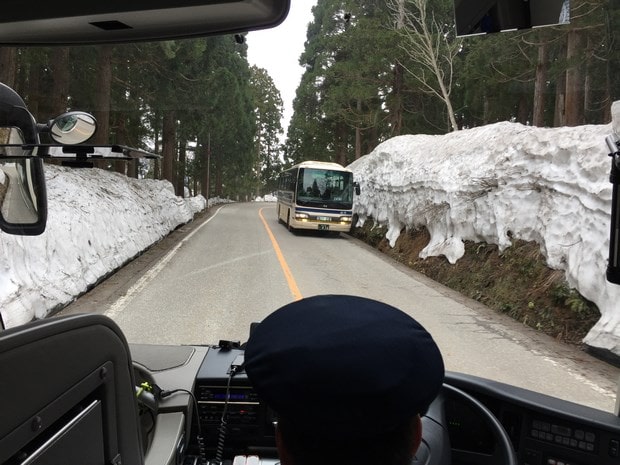
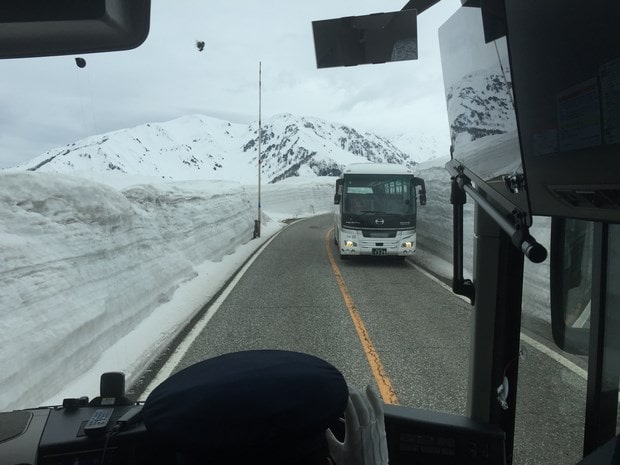
There are also occasional construction vehicles clearing collapsed snow along the road.
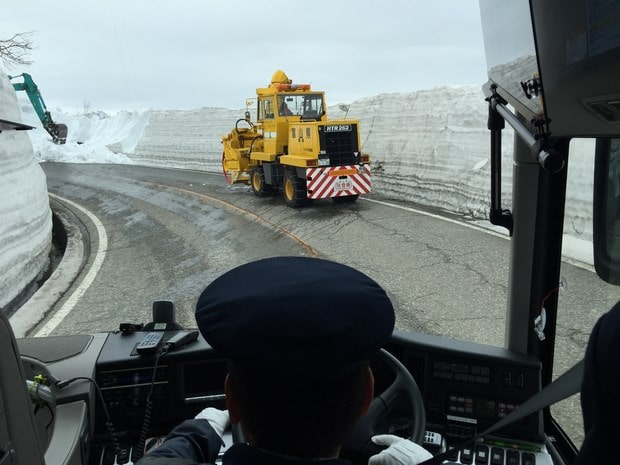
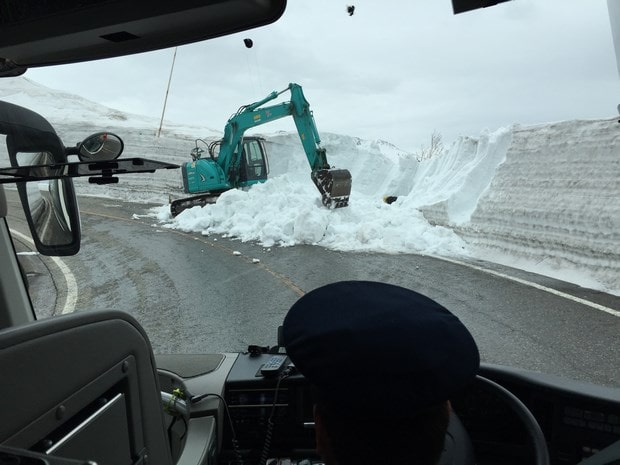
In addition to enjoying the snow walls on both sides of the road, you can also admire the snowy mountain scenery along the way. Near the Daikanbo observation deck, which is closest to Shomyo Falls, the bus will slow down significantly, allowing passengers to appreciate this famous waterfall on the Tateyama Kurobe route.
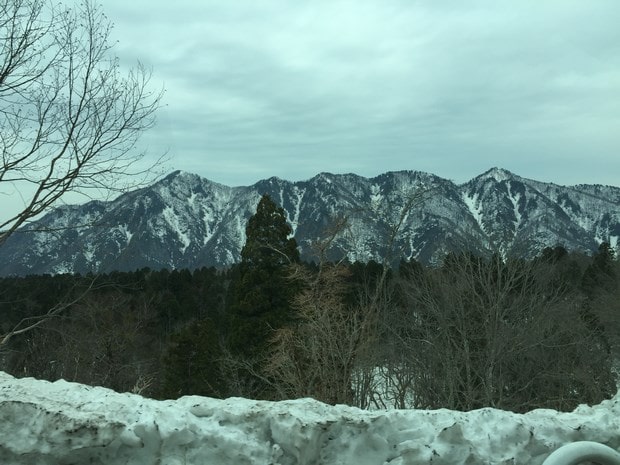
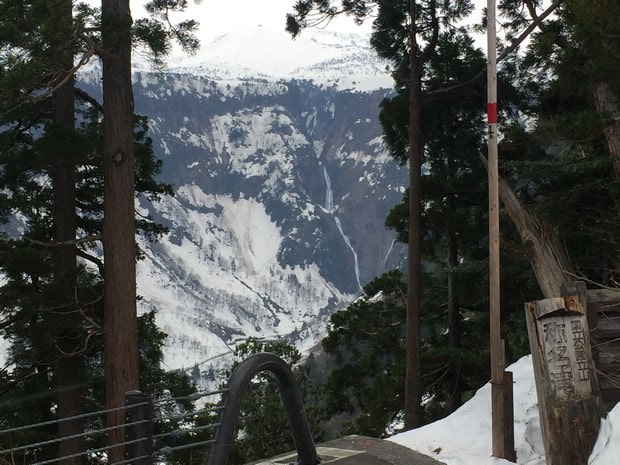
The first intermediate stop from Bijodaira to Murodo is Midagahara, which is Japan’s largest highland wetland. In summer, many people come here for hiking, but in April and May, the snow has not yet melted, so no one gets off here.
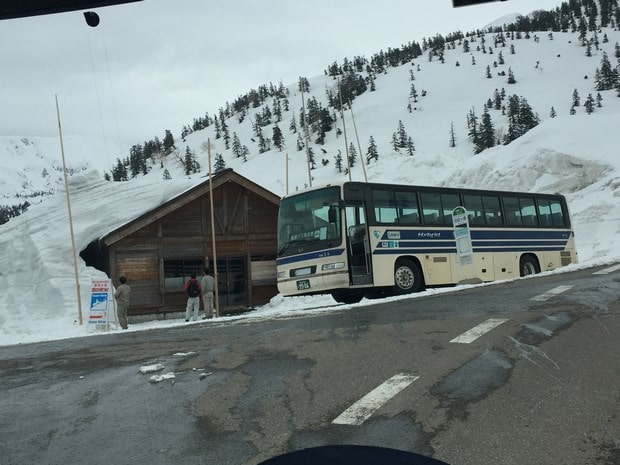
After passing Midagahara, the journey is about three-fifths complete, and from here, the snow depth exceeds the height of the bus.
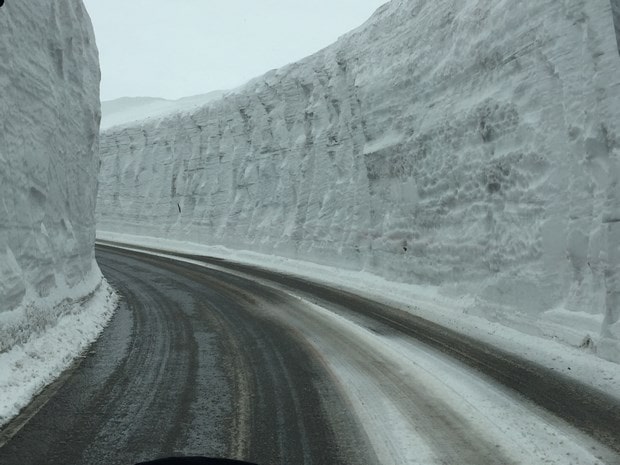
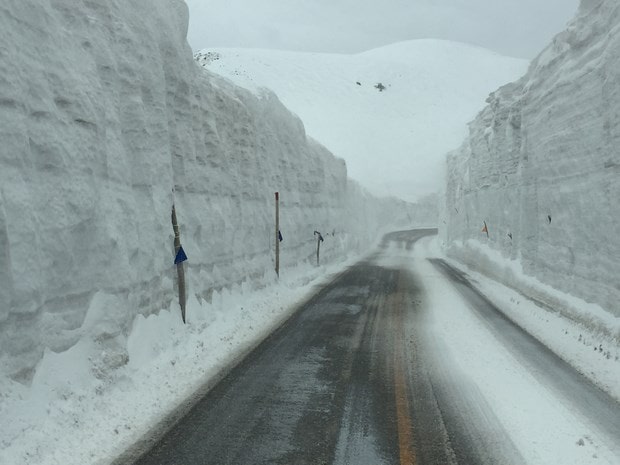
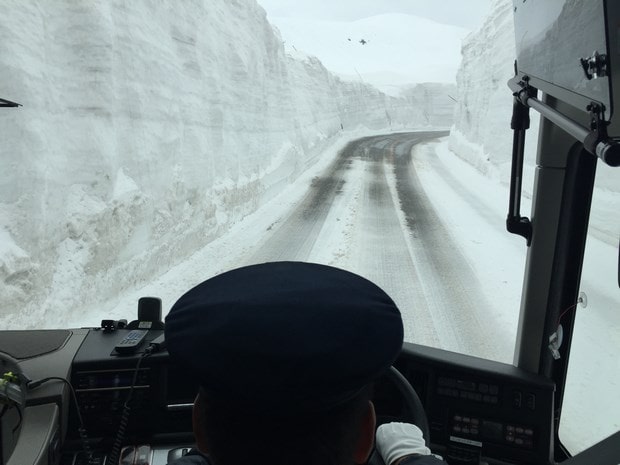
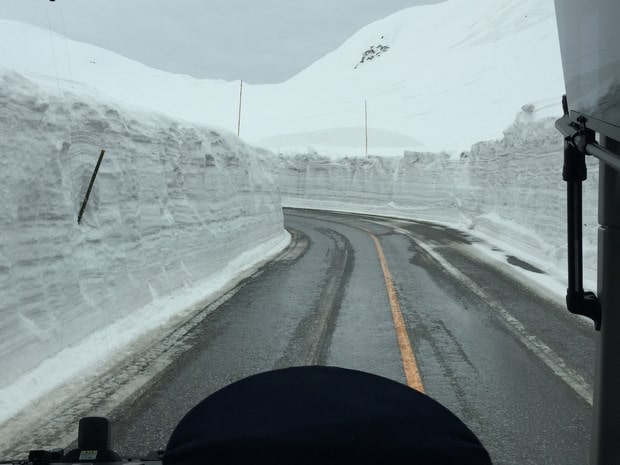
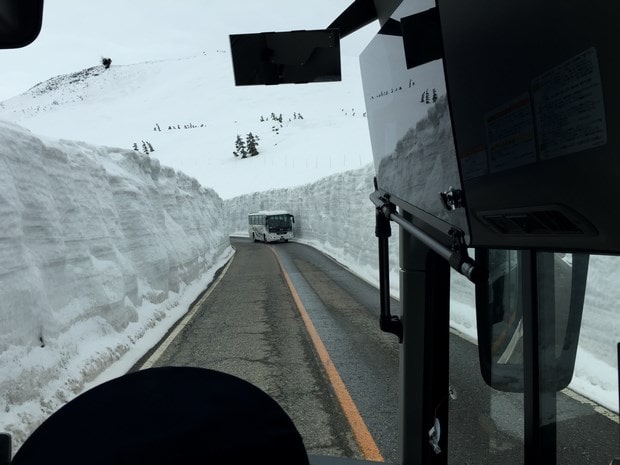
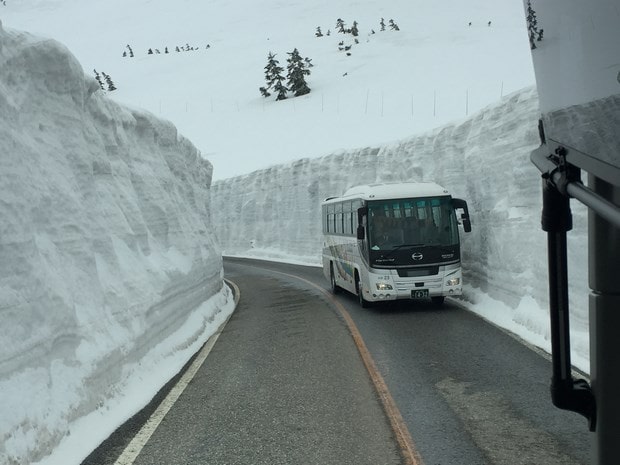
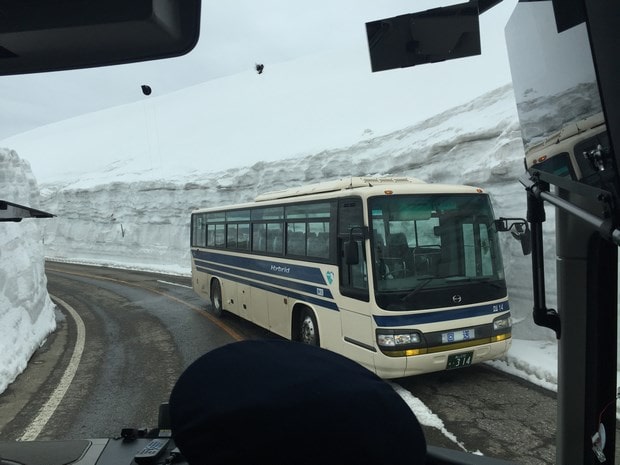
When you see this sign indicating one-way traffic (i.e., single-lane two-way traffic), it means you are about to enter the famous Snow Wall of Tateyama Kurobe.
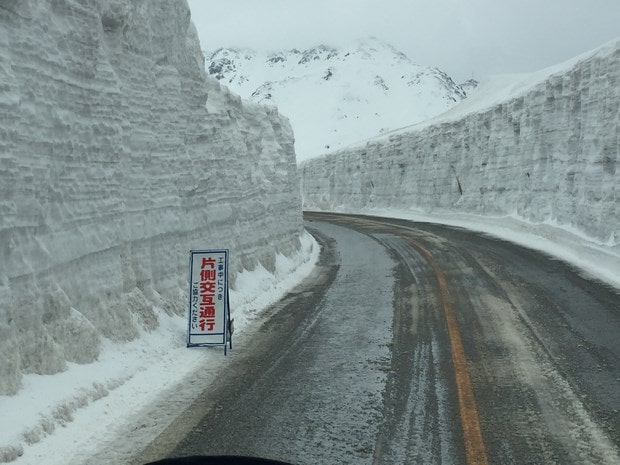
After entering the Snow Wall, you can see small black dots in the distance. At first, I didn’t know what they were, but as we got closer, I realized they were people. Compared to the towering snow walls, they looked very small.
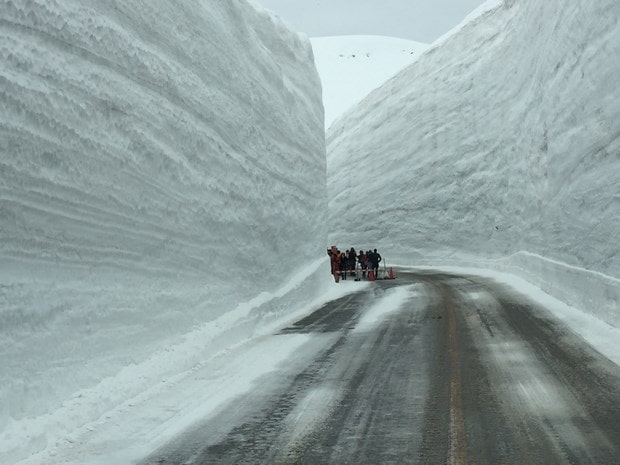
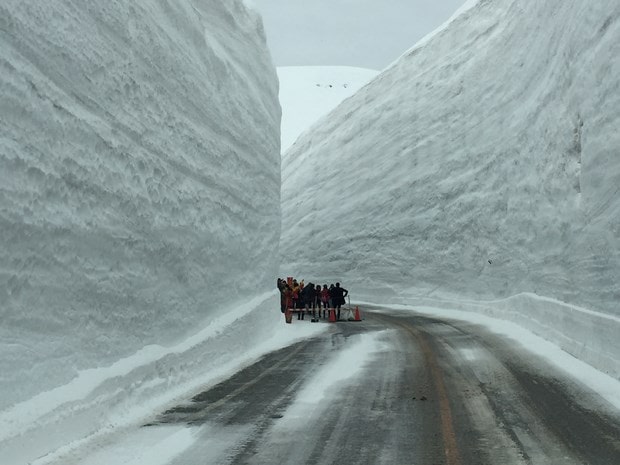
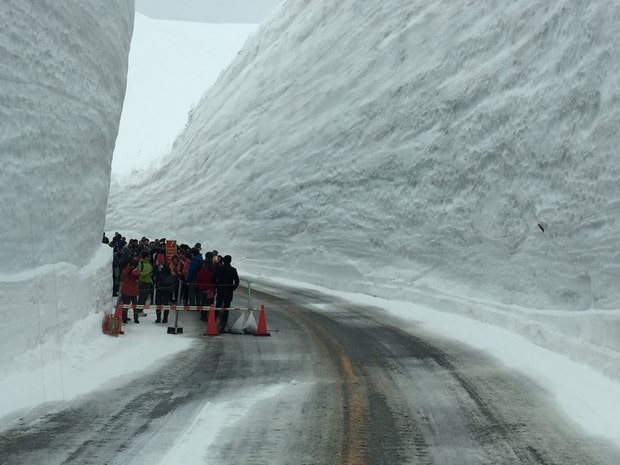
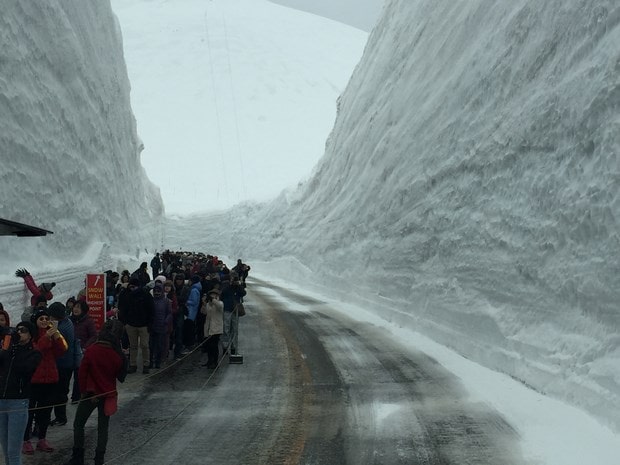
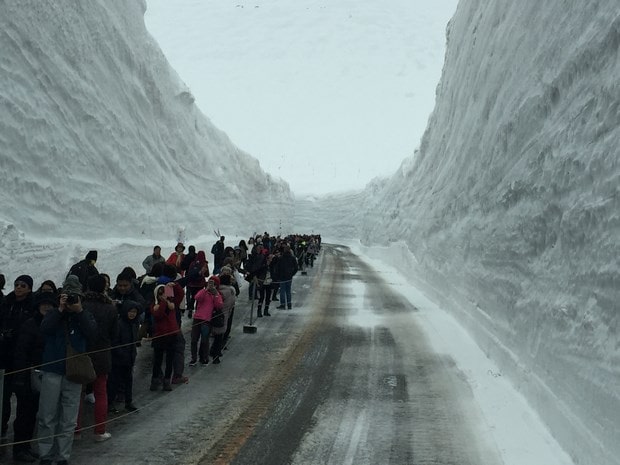
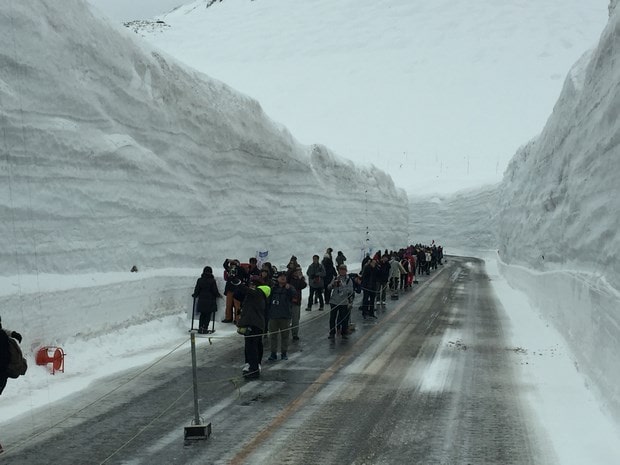
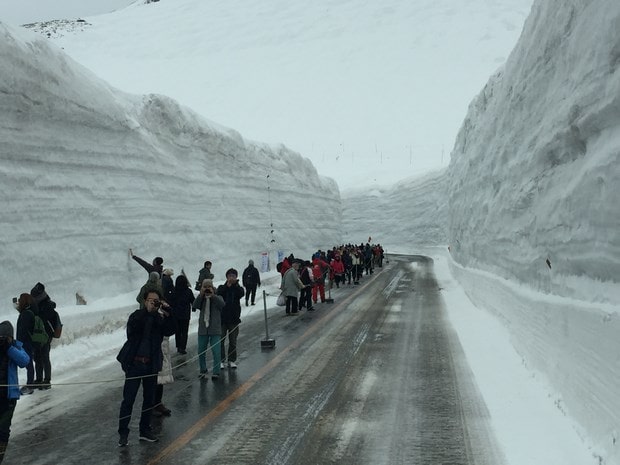
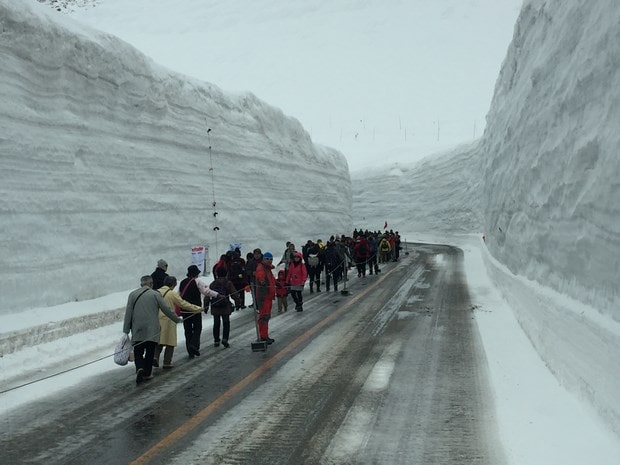
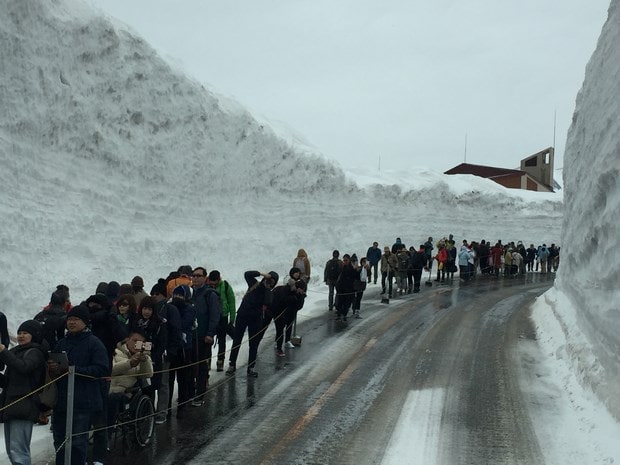
After passing the Snow Wall, you will reach Murodo, which is the terminal station for the Tateyama Highland Bus.
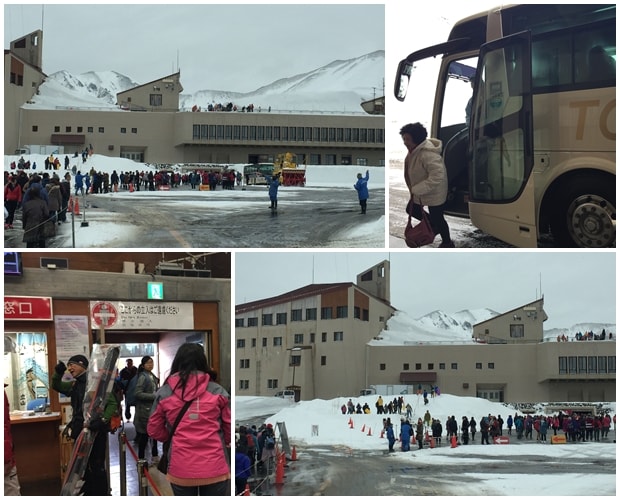
(3) Murodo Station and Tateyama Tunnel Electric Bus
3.1 Murodo Station
Murodo is the highest point of the entire Tateyama Kurobe Alpine Route and also the most important scenic area. Most of the time spent by tourists visiting Tateyama Kurobe will be in Murodo, especially during the period from mid-April to mid-June when the Snow Wall is open. Therefore, Murodo Station is always crowded with tourists, and it can get extremely packed.
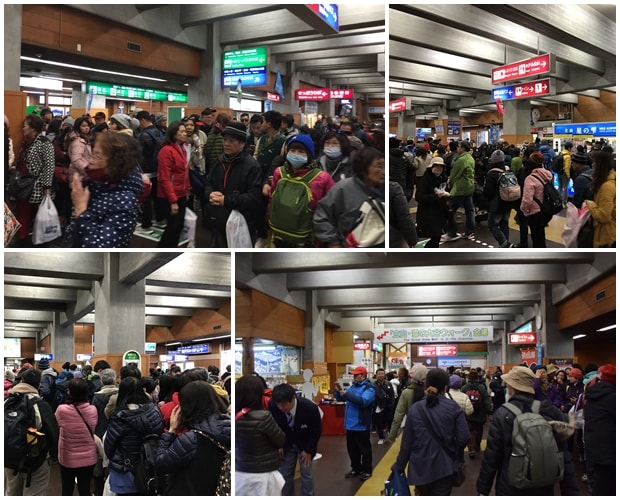
Although Murodo Station is the largest station on the Tateyama Kurobe Alpine Route, the area is not very large. The station building has only two floors. The 1F level mainly serves as the waiting room and boarding area for the Tateyama Highland Bus and the Tateyama Tunnel Electric Bus. The 2F level has a restaurant and shops selling souvenirs, and it is also the entrance to the Tateyama Hotel.
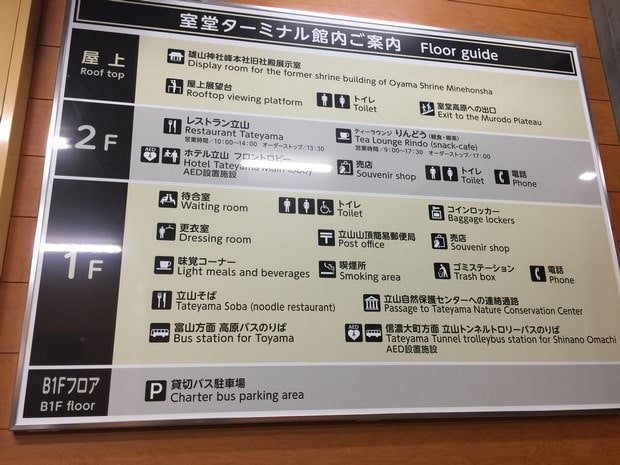
Below is the floor plan of the 1F level of Murodo Station. The letters A, B, C, and D in the diagram mean: A is the boarding area for the Tateyama Tunnel Electric Bus, B is the boarding area for the Tateyama Highland Bus, C is the staircase leading to the Snow Wall, and D is the staircase leading to the 2F level and the Murodo Plateau (e.g., Tateyama Tamadono no Yusu, Mikurigaike Pond, Jigokudani Observatory, Jigokudani Hot Spring, etc.).
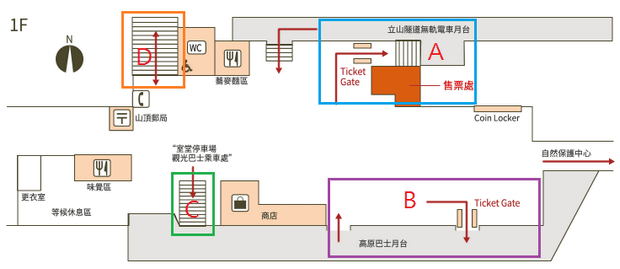
This time, we stayed at the Tateyama Hotel in Murodo, so we had the opportunity to take photos of the empty Murodo Station at night, which allowed us to see the layout of the station facilities more clearly.
The 1F level of Murodo Station is part of the station. In the photo, the left side is the boarding area for the Tateyama Tunnel Electric Bus, while the right side is the boarding area for the Tateyama Highland Bus.
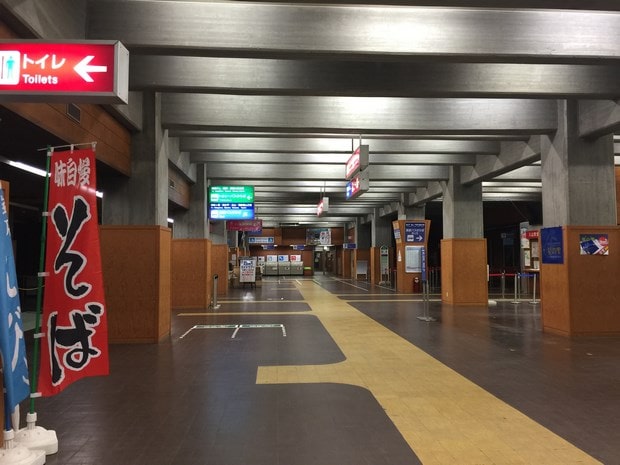
Boarding area for the Tateyama Tunnel Electric Bus to Daikanbo
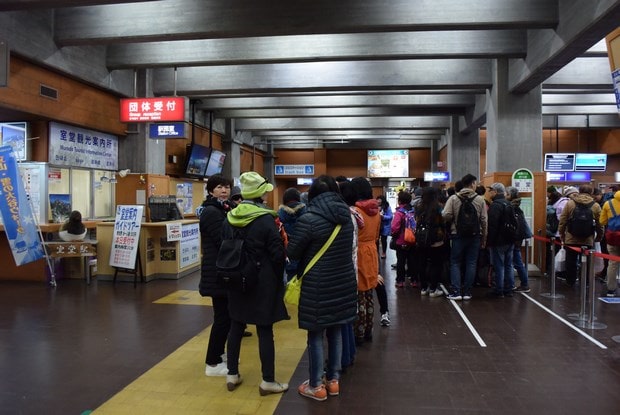
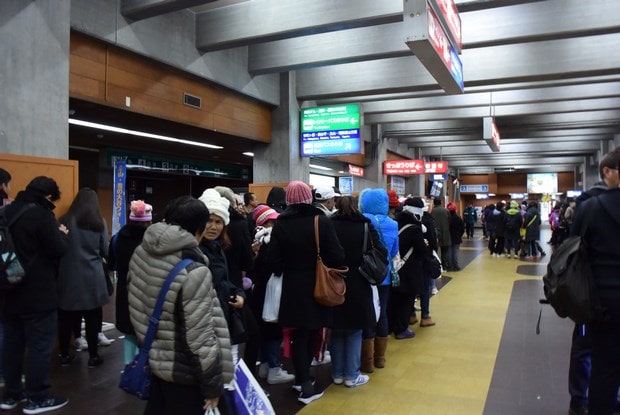
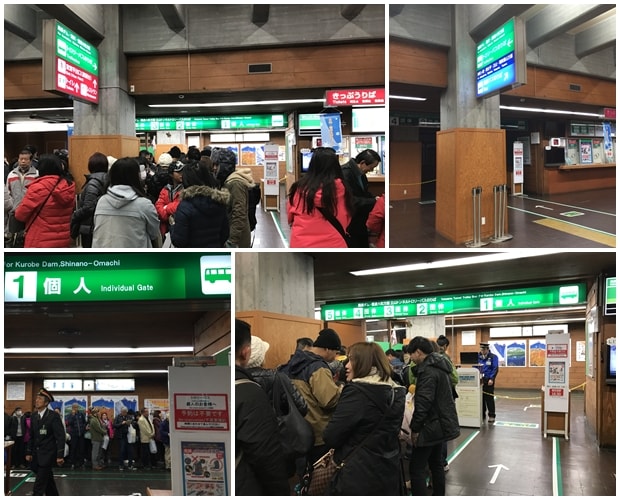
Boarding area for the Tateyama Highland Bus to Bijodaira
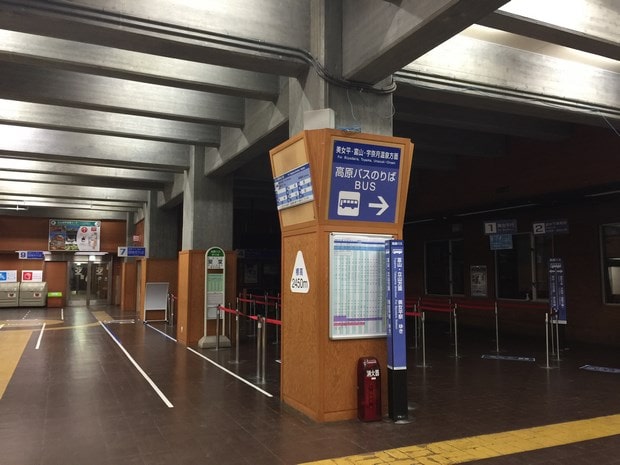
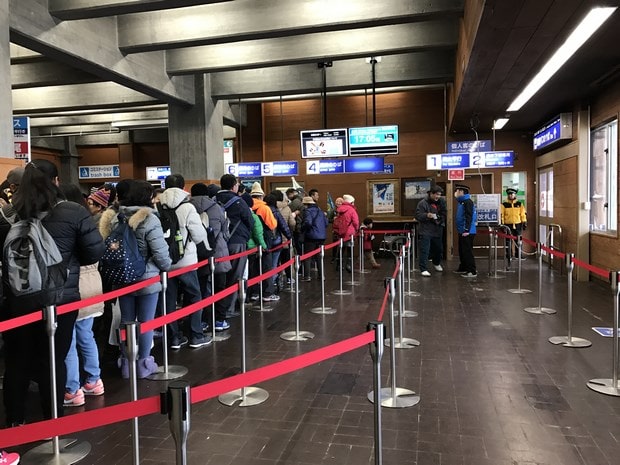
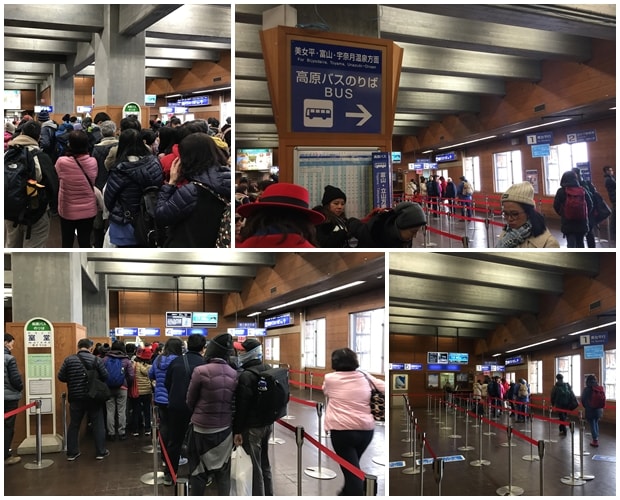
On the other side of the 1F level of Murodo Station, there are some snack shops, a small rest area with seats, and possibly the highest-altitude post office in Japan. The entrance to the Snow Wall and other attractions on the Murodo Plateau are also located here.
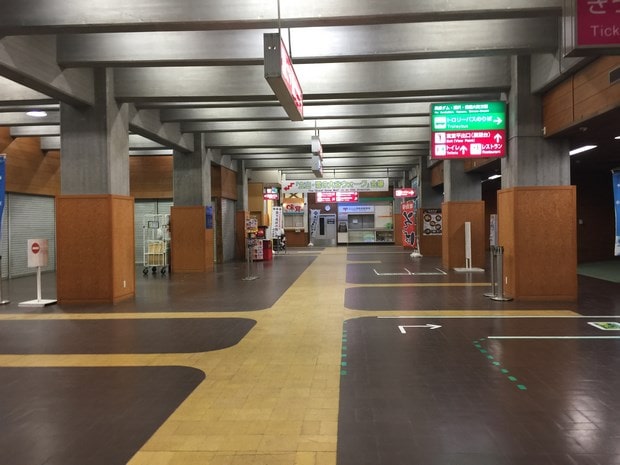
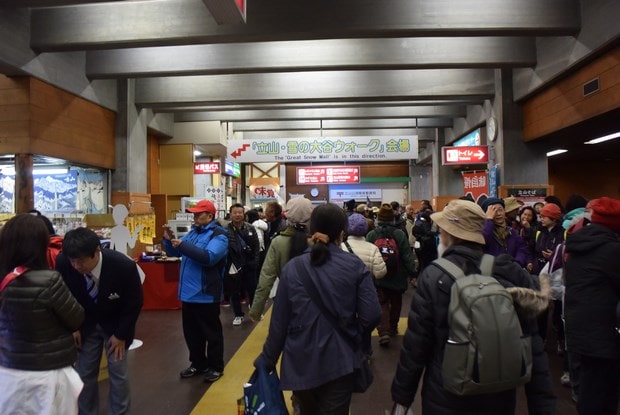
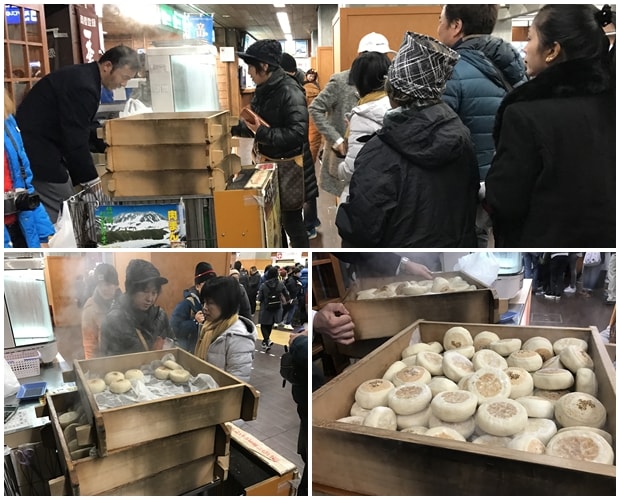
Rest area
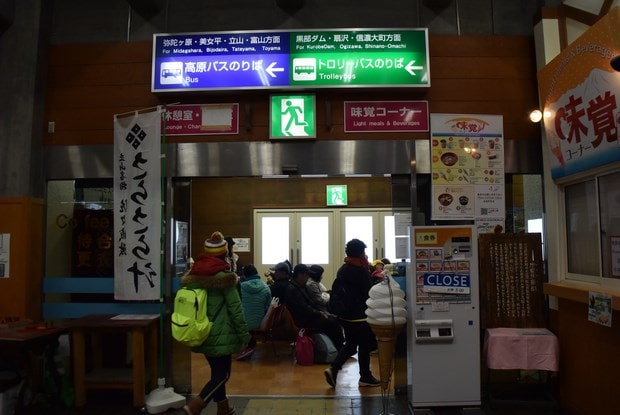
Murodo Station has a small post office where you can send a postcard home, but the post office only opens in May.
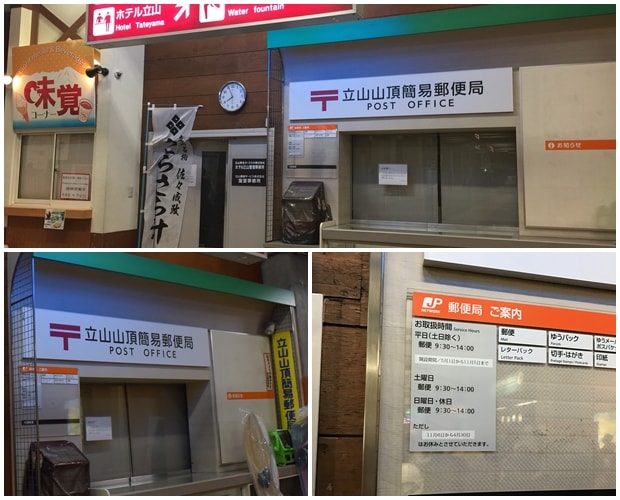
From the 1F level of Murodo Station, you can go down a staircase next to the rest area to reach the entrance to the Snow Wall. Above the staircase, there is a large white banner with the words “Tateyama • Snow Wall Walk” and a red arrow, so you won’t miss it even if it’s crowded.
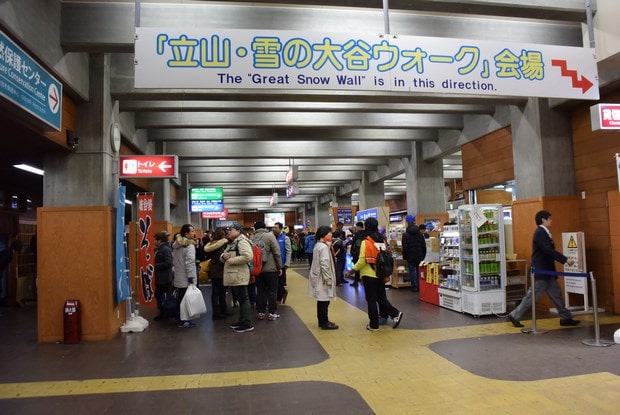
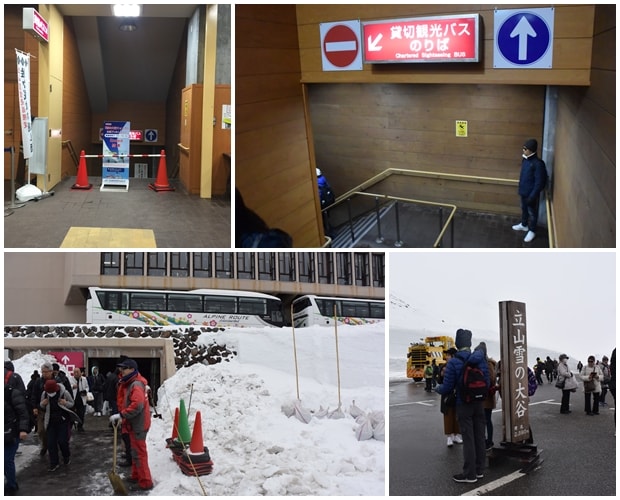
Walking up the stairs next to the post office leads to the 2nd floor, where you can find restaurants, souvenir shops, and the Tateyama Hotel.
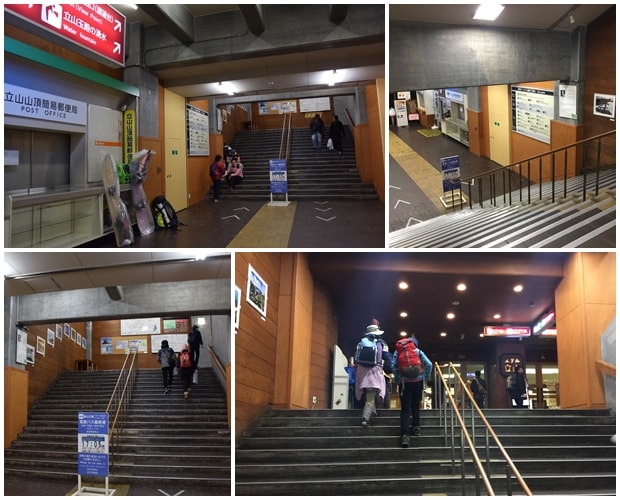
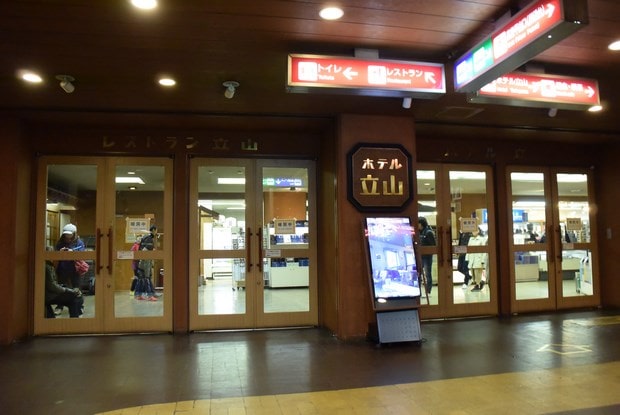
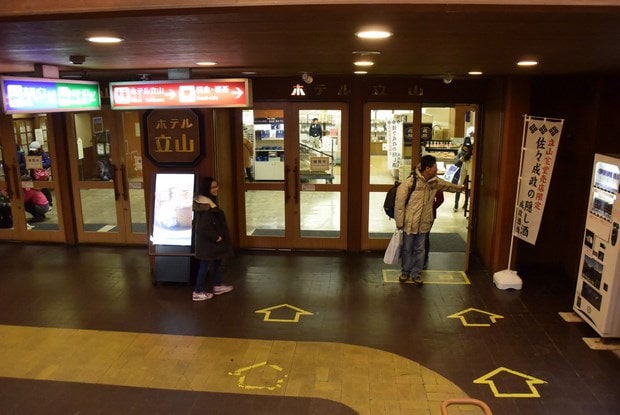
On the 2nd floor, besides souvenirs, you can also purchase mountaineering gear and cold-weather clothing.
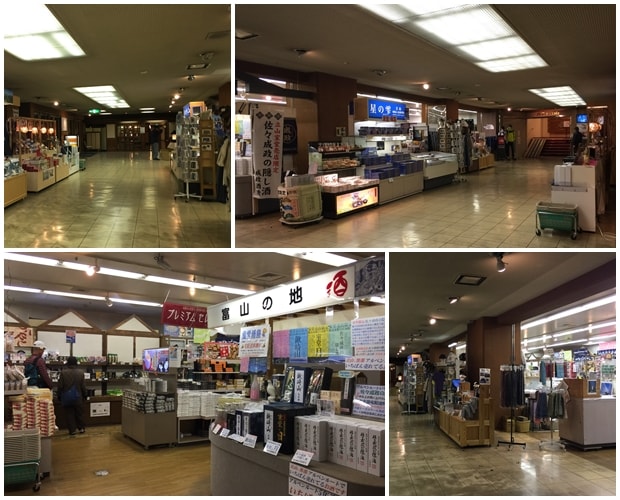
The 2nd floor also houses the only formal restaurant in Murodo. If you want a proper meal, this is the only option, so it gets crowded during lunchtime, and you may need to queue.
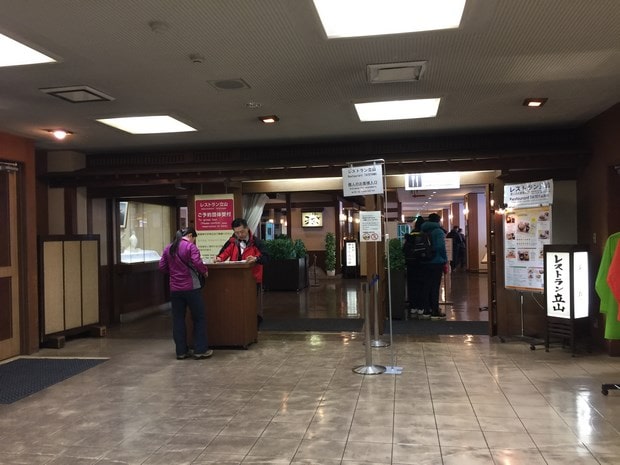
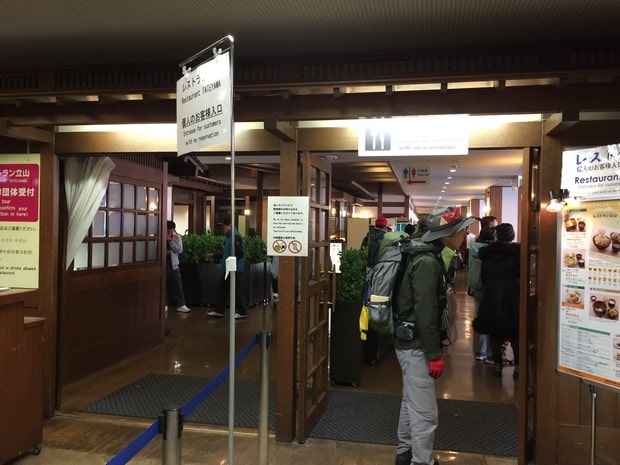
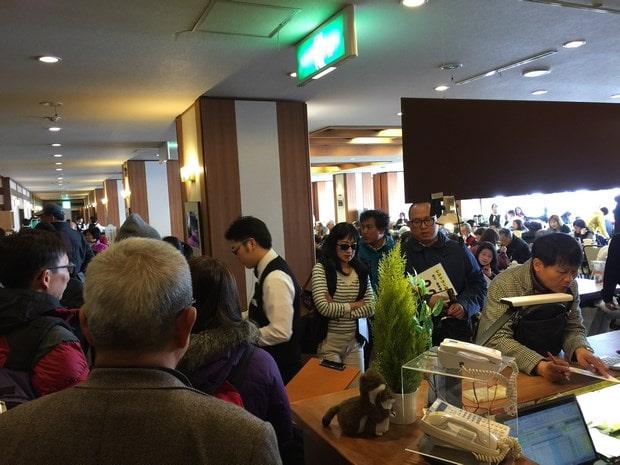
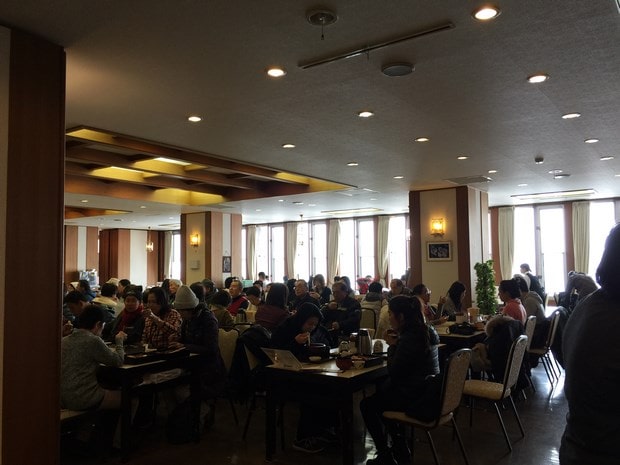
Although it’s the only restaurant, the prices are not too high, and the food is quite good.
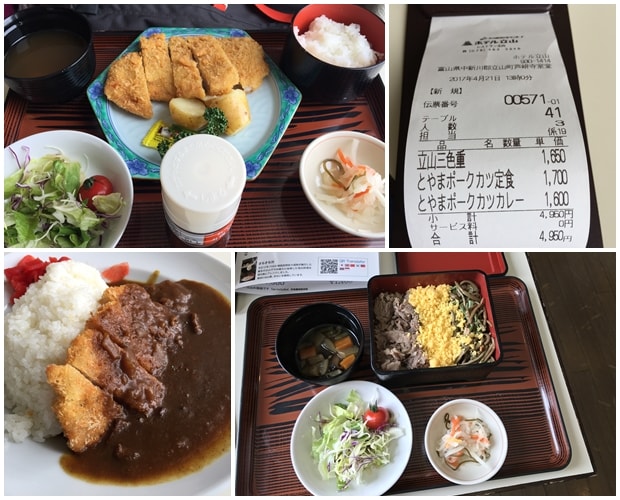
If you get a window seat, you can also see the entrance to the Snow Wall.
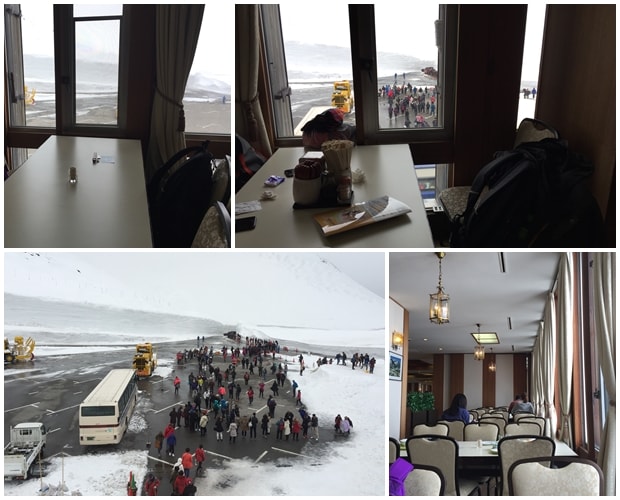
This is the scene in the morning before the Snow Wall opens, where staff are checking and organizing items at the entrance.
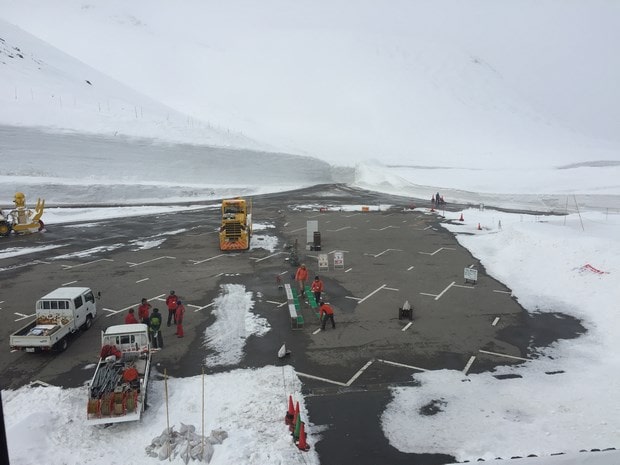
The entrance to the Tateyama Hotel is also on the 2nd floor, right next to the souvenir shop.
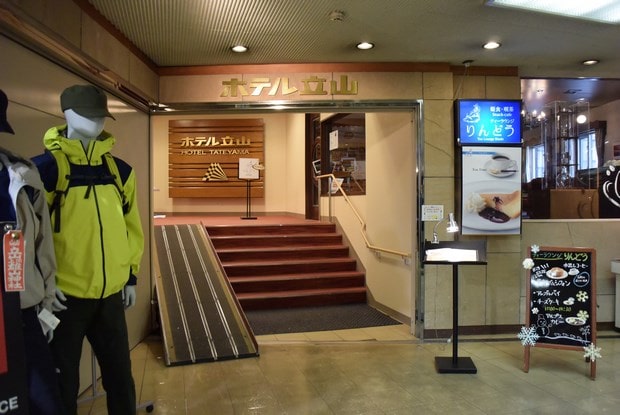
Going up another flight of stairs from the 2nd floor leads to the rooftop of the building, where there is an observation deck. However, in April, the observation deck is covered in snow and is barely recognizable.
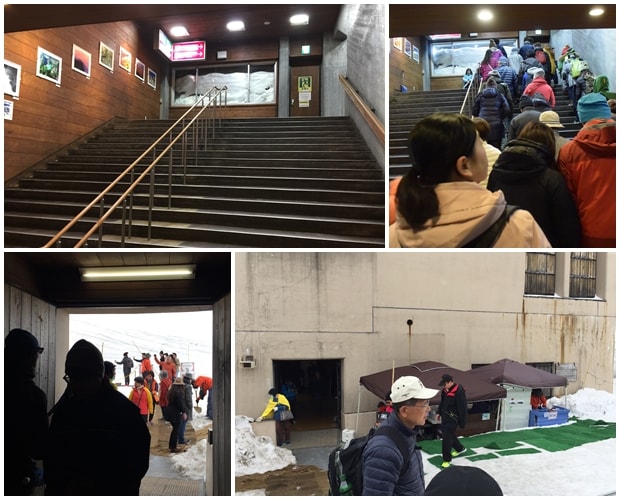
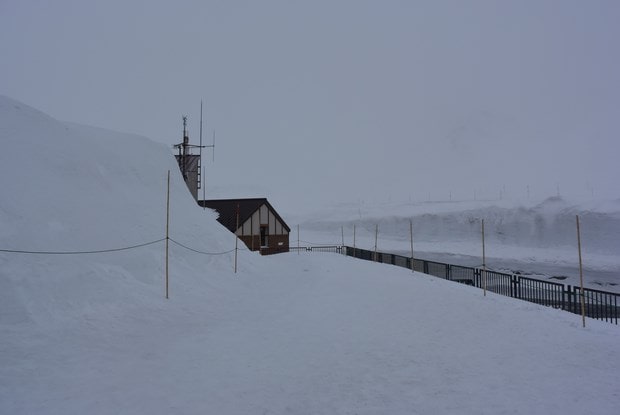
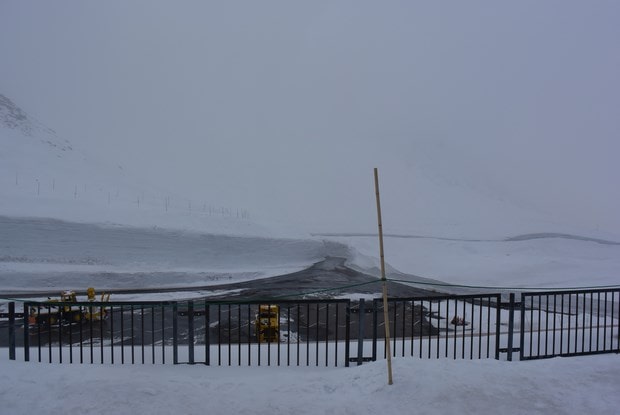
From the observation deck, you can access other attractions in the Murodo Plateau, such as the Tateyama Gyokusen no Yūsui, Mikurigaike Pond, Jigokudani Observation Deck, and Jigokudani Hot Spring. However, in April, these attractions are buried under snow, and without proper equipment, it’s difficult to venture too far. So, here you can only enjoy the snow scenery and the snow corridor similar to the Snow Wall.
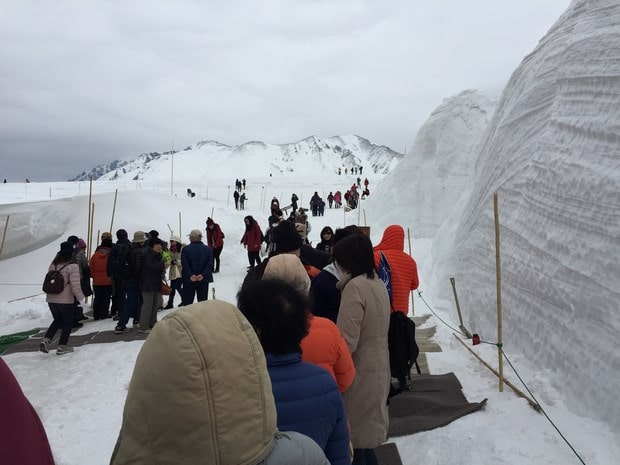
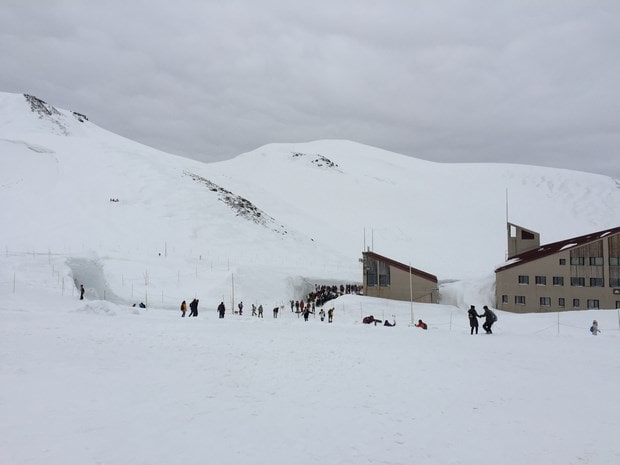
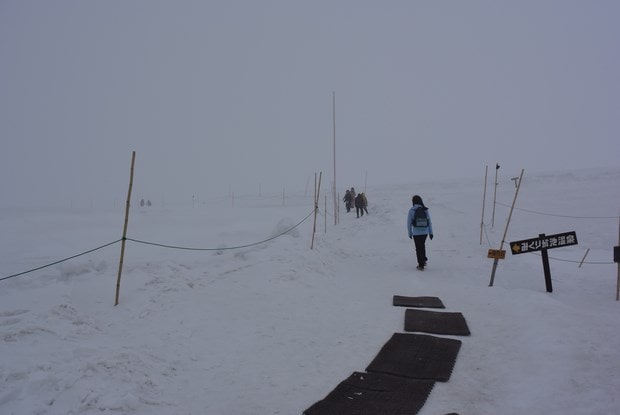
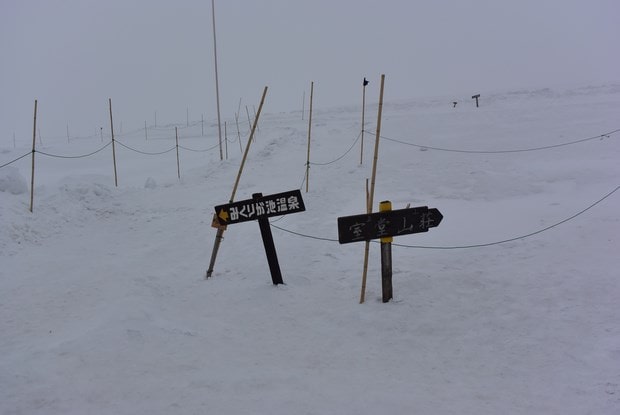
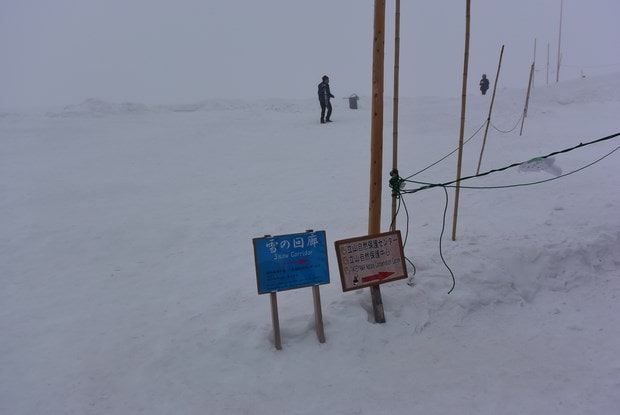
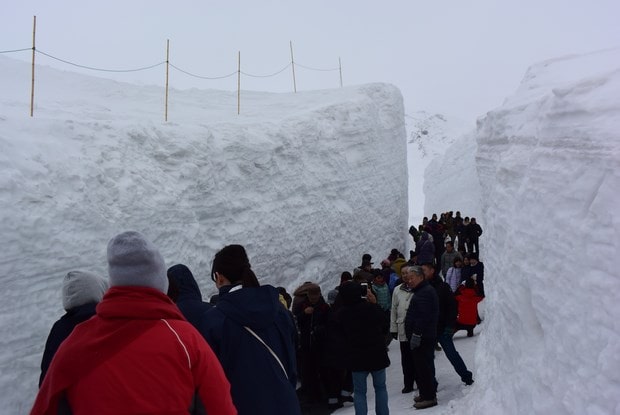
3.2 Murodo Station Attractions – Snow Wall
Murodo is the main scenic area of the Tateyama Kurobe Alpine Route, with many attractions nearby, such as the Tateyama Gyokusen no Yūsui, Mikurigaike Pond, Jigokudani Observation Deck, and Jigokudani Hot Spring. However, from April to May, these attractions are buried under thick snow and are completely invisible. Without proper equipment and familiarity with the area, it’s difficult to hike to these spots. Therefore, during spring, the only attraction you can visit in Murodo is the Snow Wall, which is the highlight of Tateyama Kurobe and is worth multiple other attractions. For a detailed guide on the Snow Wall, you can refer to this article: “Tateyama Kurobe Snow Wall (Yuki no Otani) Travel Guide.”
3.3 Tateyama Tunnel Electric Bus
A 3.7-kilometer-long tunnel, the Tateyama Tunnel, has been dug through the mountains between Murodo and Daikanbo. Since vehicles can pass through the tunnel, even though Daikanbo is inaccessible by road, you can still take an electric bus through the Tateyama Tunnel from Murodo to Daikanbo, with a travel time of about 10 minutes.
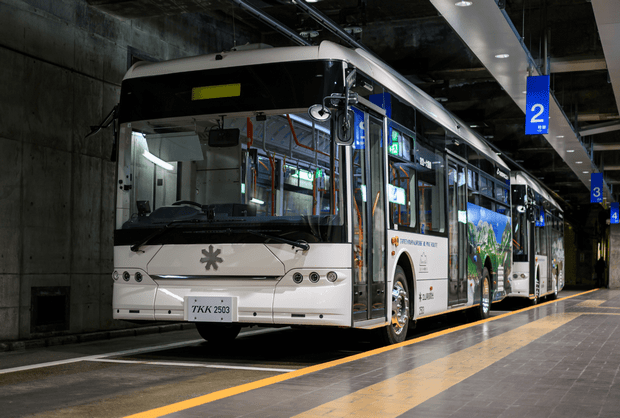
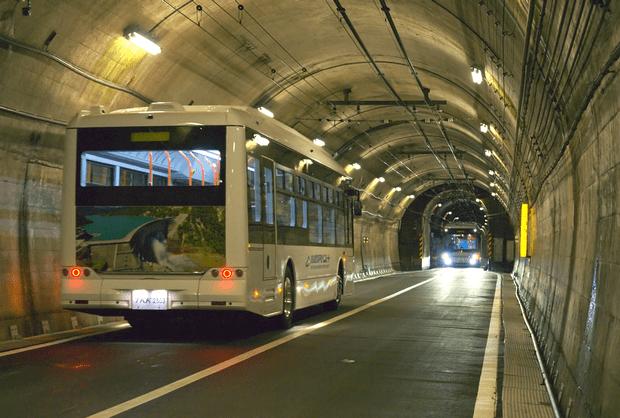
Note: Photos are from the official website.
The Tateyama Tunnel used trolley buses that did not produce exhaust emissions until 2025. By 2024, these buses had been in operation for 28 years. Since the vehicle parts are no longer in production, maintenance is no longer possible. Therefore, the trolley buses will be retired on December 1, 2024, and replaced by electric buses. Below is a description of the previous Tateyama Tunnel trolley buses.
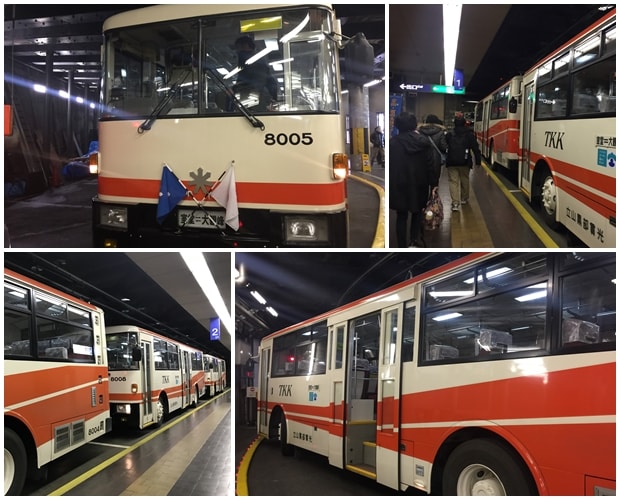
The capacity of the Tateyama Tunnel trolley buses is similar to that of a regular bus. According to the official website’s timetable, the trolley buses depart every 30 minutes, but four buses depart simultaneously, which is enough to handle the queue of passengers. However, during peak times, you may have to stand.
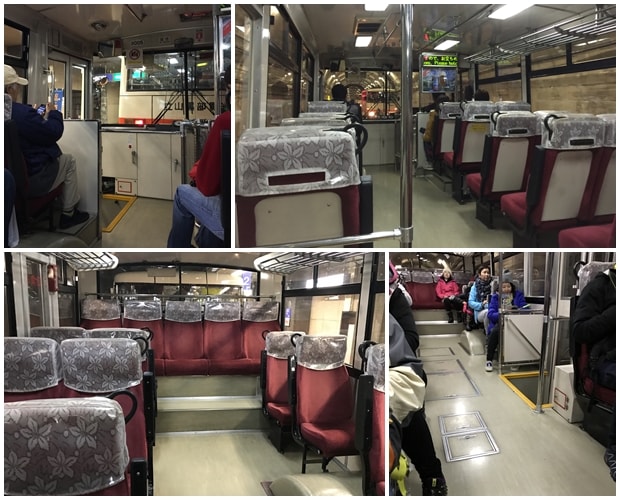
The width of the Tateyama Tunnel is only slightly wider than a single bus, but there are passing bays inside the tunnel for oncoming vehicles.
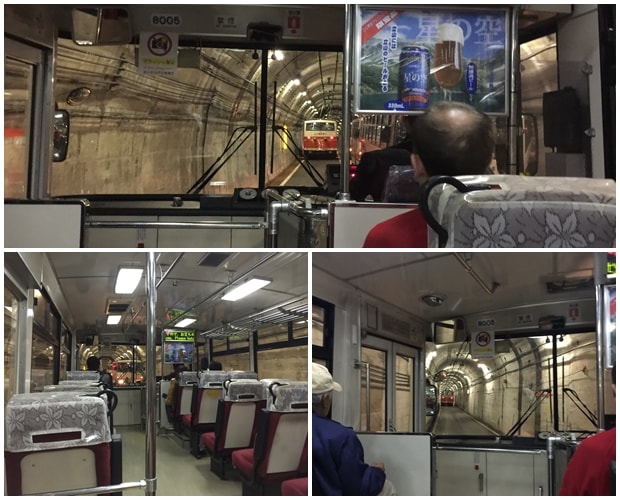
(4) Daikanbo Station and Tateyama Ropeway
4.1 Daikanbo Station
Daikanbo has a rugged terrain with little flat land, so Daikanbo Station is quite small and can get even more crowded than Murodo during peak times.
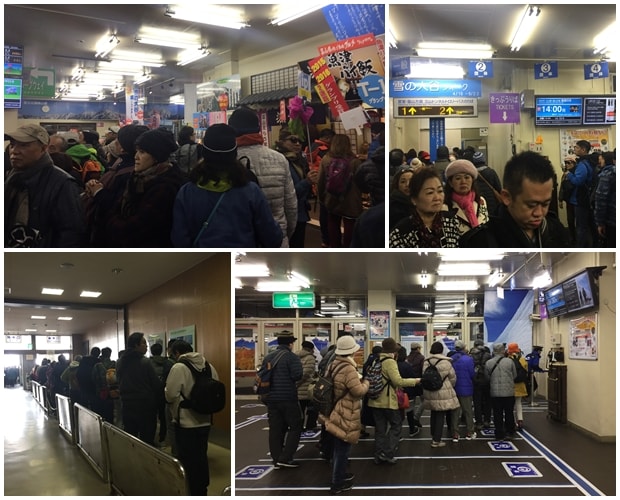
When you arrive at Daikanbo Station, besides transferring to the next station, make sure to go up to the rooftop observation deck to enjoy the stunning mountain views. There are no other activities or attractions at Daikanbo, so 15 to 20 minutes should be enough.
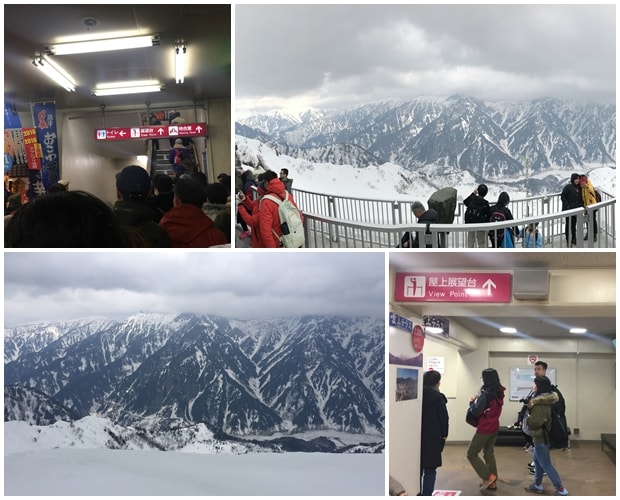

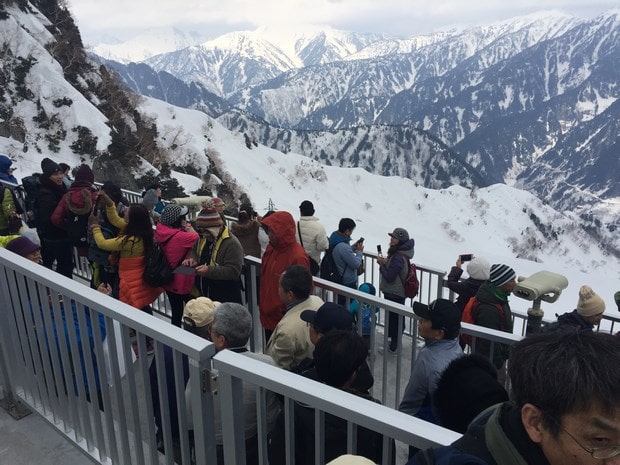
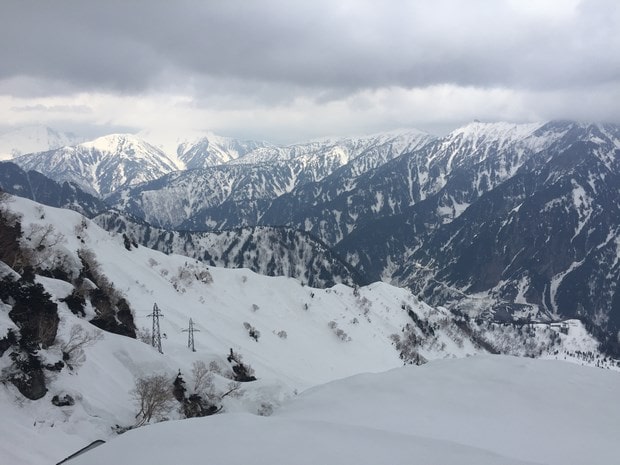
4.2 Tateyama Ropeway
The Tateyama Ropeway is Japan’s largest pillarless aerial tramway. It serves as a transportation link between Daikanbo at an altitude of 2,316 meters and Kurobedaira at 1,828 meters, and is also one of the most anticipated sightseeing attractions on the Tateyama Kurobe Alpine Route. The ropeway is 1.7 kilometers long and takes about 7 minutes to travel. From the tramway, you can enjoy beautiful mountain scenery.
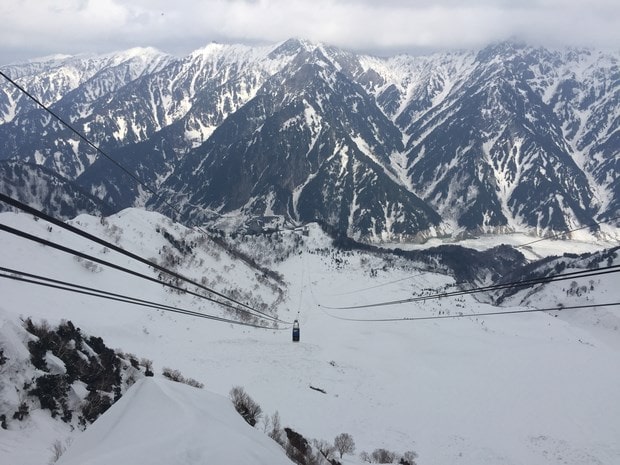
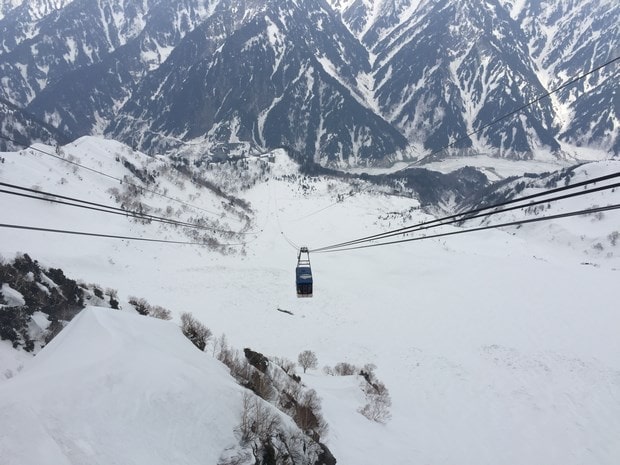
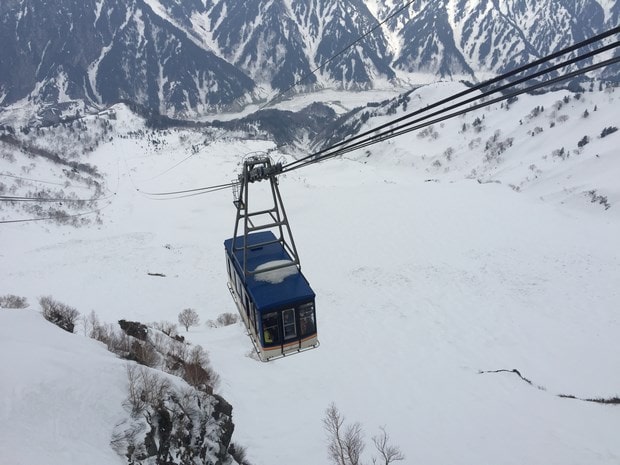
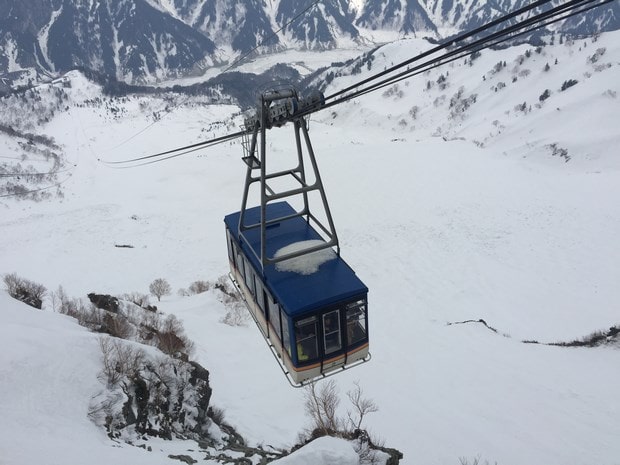
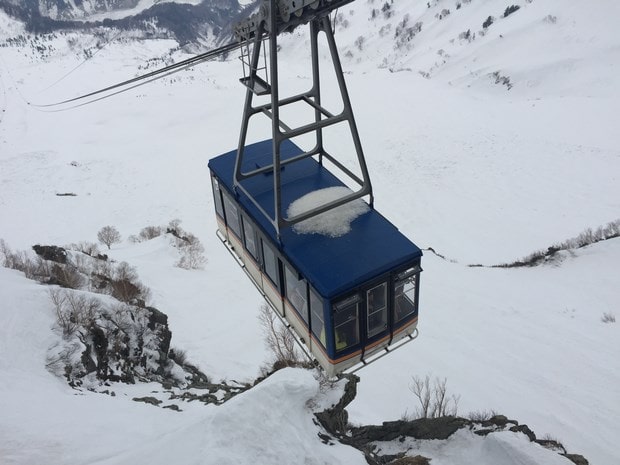
From the tramway, you can clearly see that Daikanbo Station is built on a cliff.
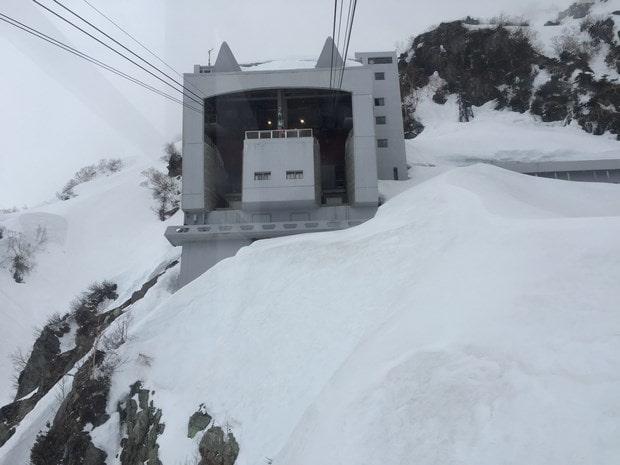
Another tramway coming from the opposite side.
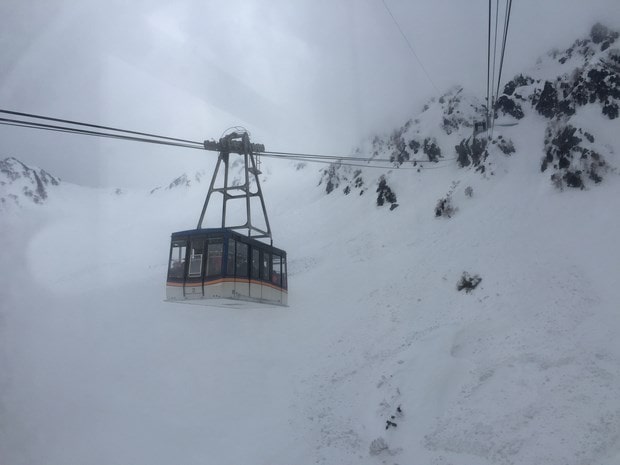
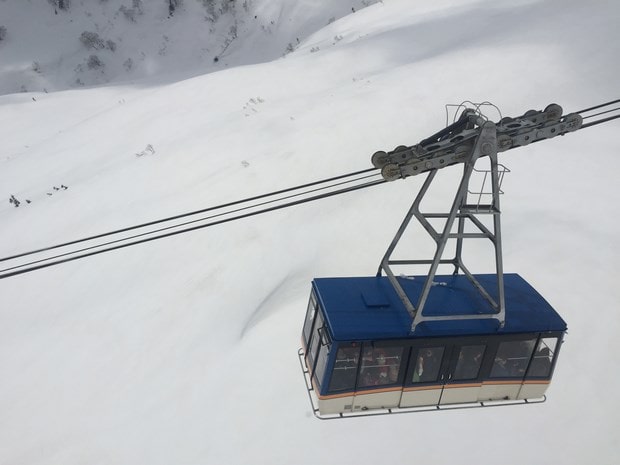
The weather on Tateyama is unpredictable, especially in April, May, and November. One minute it may be clear, and the next minute there may be heavy fog or snowstorms. During such times, you may not be able to see anything from the tramway.
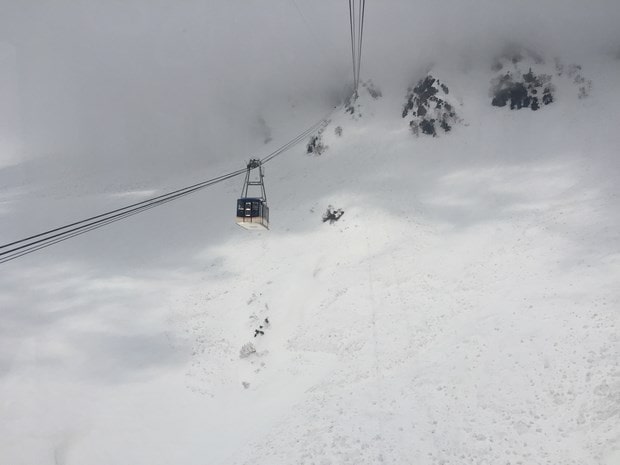
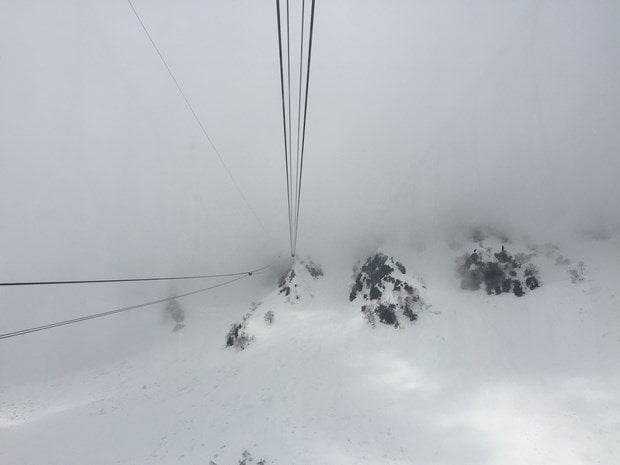
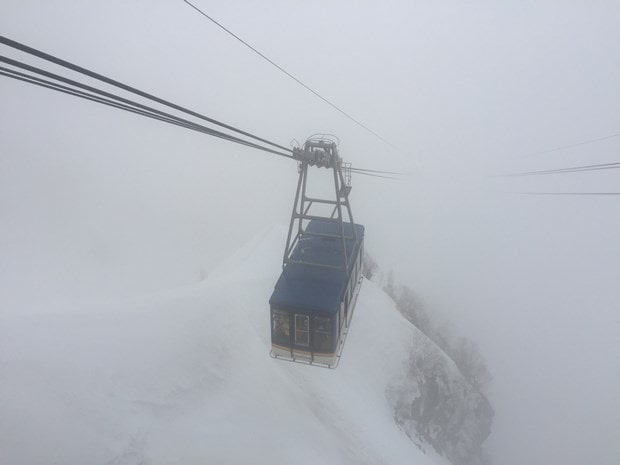
According to the official website’s timetable, the Tateyama Ropeway departs every 20 minutes, so during peak times, the cabins may be crowded, and you may not be able to comfortably enjoy the view outside.
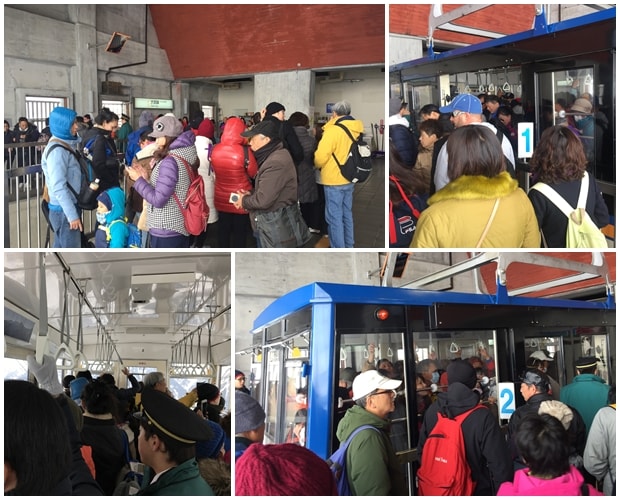
This time, because we stayed overnight at Murodo, we made a round trip between Murodo and Kurobe Dam on the first day, and then went from Murodo to Ogizawa to leave on the second day. Therefore, we took the Tateyama Tunnel Trolley Bus, Tateyama Ropeway, and Kurobe Cable Car three times each.
(5) Kurobedaira Station and Kurobe Cable Car
5.1 Kurobedaira Station
Kurobedaira is located on a relatively flat slope above Kurobe Lake. Inside the station, there is a relatively large souvenir shop and a restaurant.
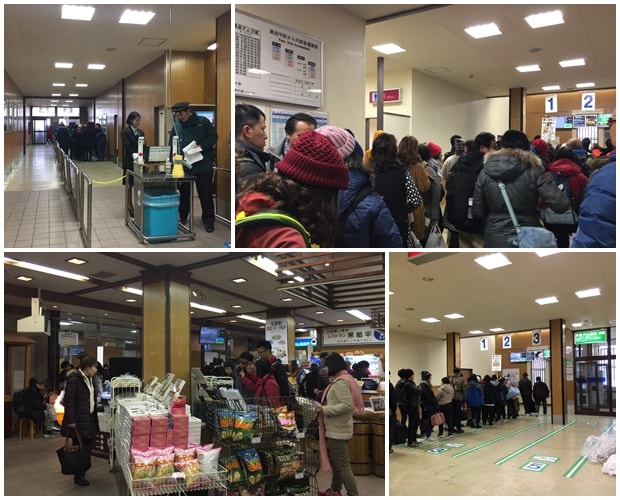
Outside Kurobedaira Station, there is a large platform where you can enjoy the surrounding scenery.
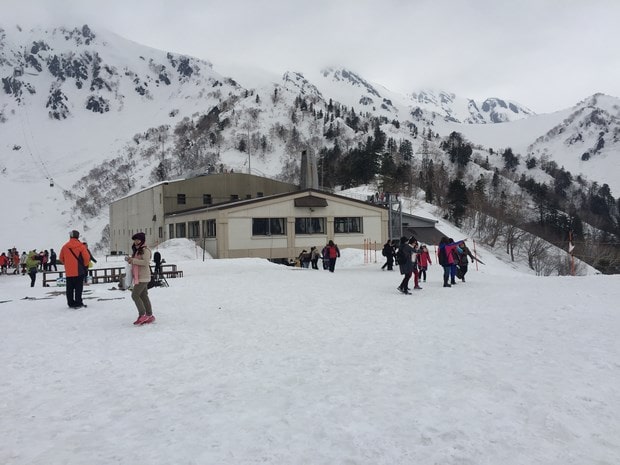
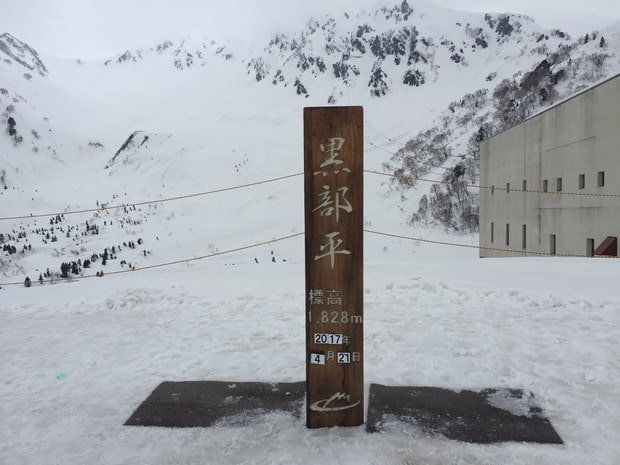
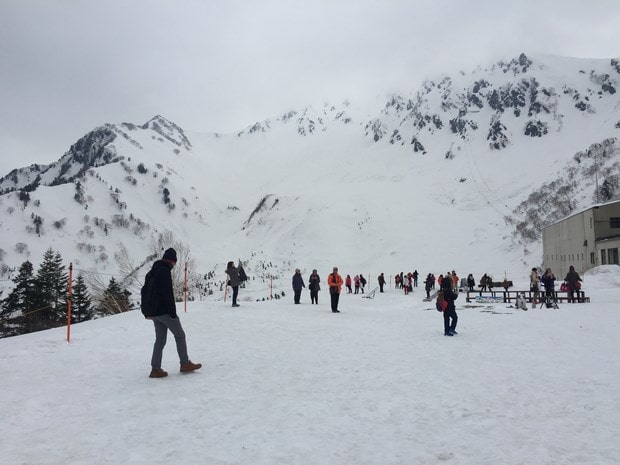
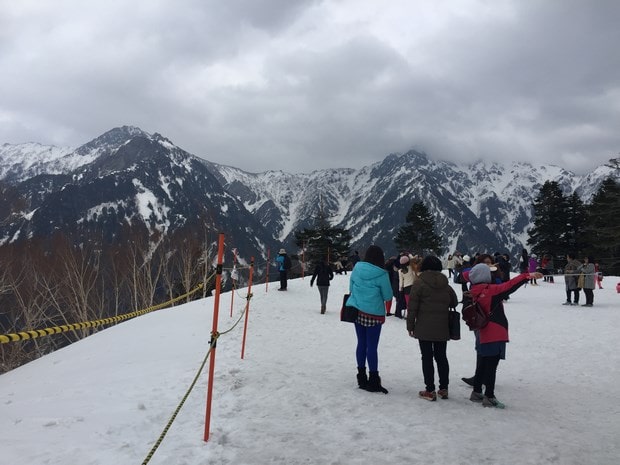
In addition to the outdoor platform, the observation deck on the station roof is also a great place to enjoy the scenery and take photos. If you are not eating at Kurobedaira, staying here for 20 to 25 minutes is sufficient.
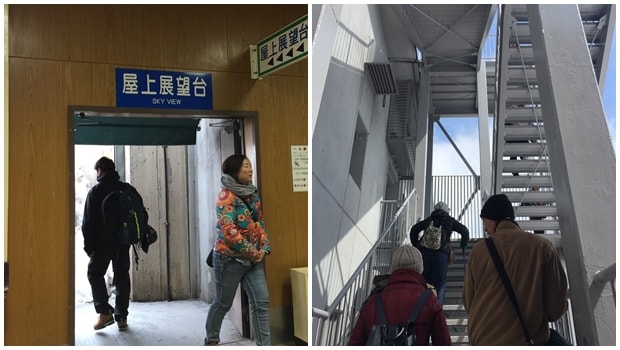
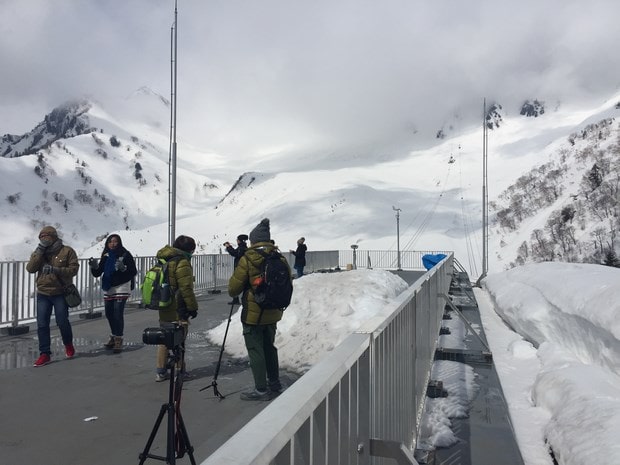
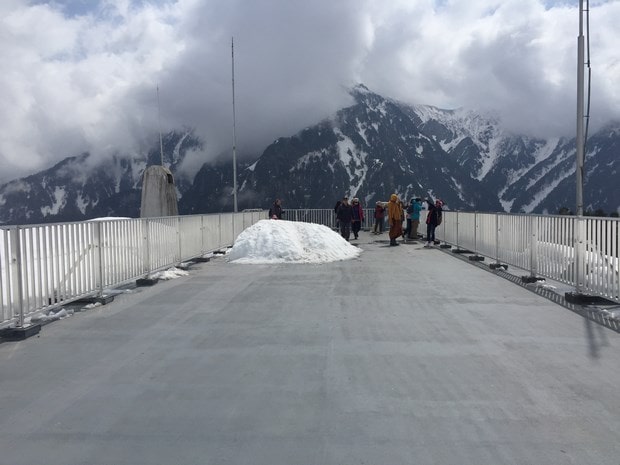
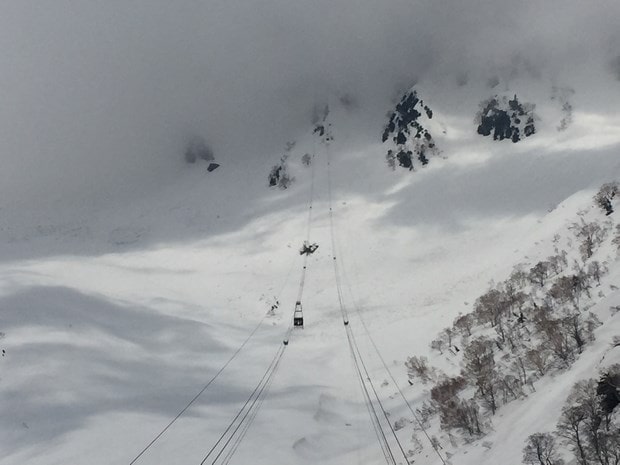
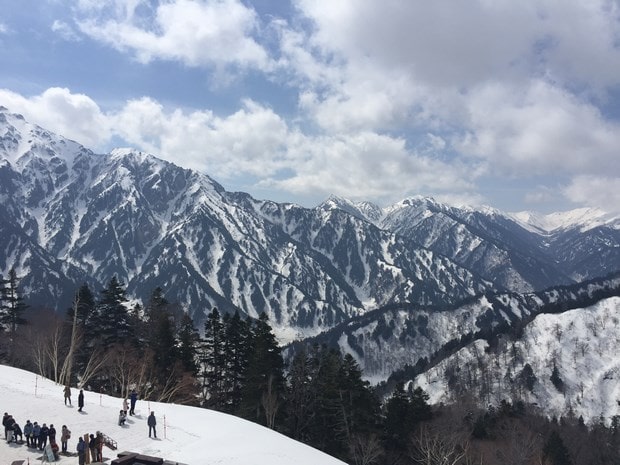
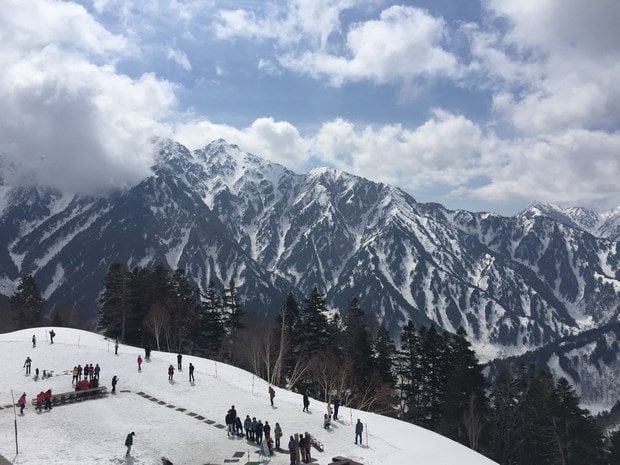
5.2 Kurobe Cable Car
The Kurobe Cable Car is similar to the Tateyama Cable Car, but the Kurobe Cable Car runs entirely inside a tunnel. The Kurobe Cable Car is 0.8 kilometers long, shorter than the Tateyama Cable Car, but with a steeper slope. It takes about 5 minutes to travel from Kurobedaira to Kurobe Lake.
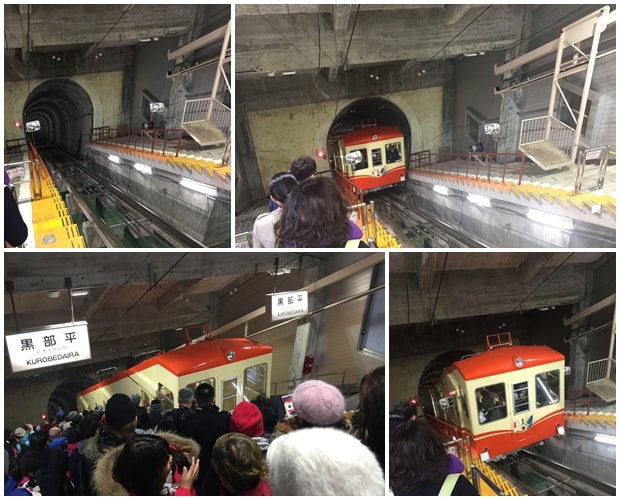
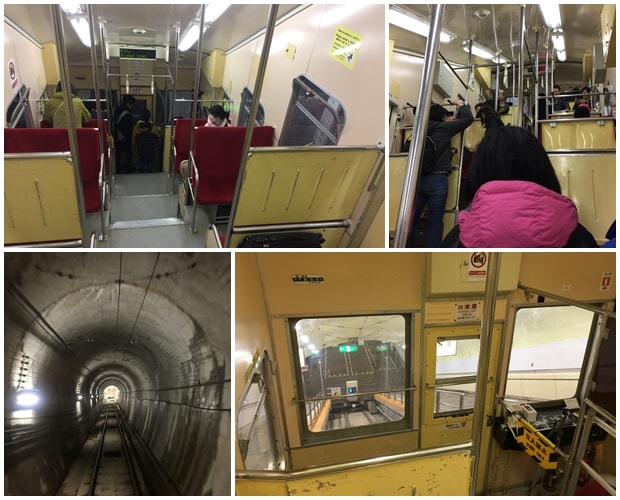
According to the official website’s timetable, the Kurobe Cable Car departs every 20 minutes, so during peak times, it can get crowded, just like the Tateyama Cable Car.
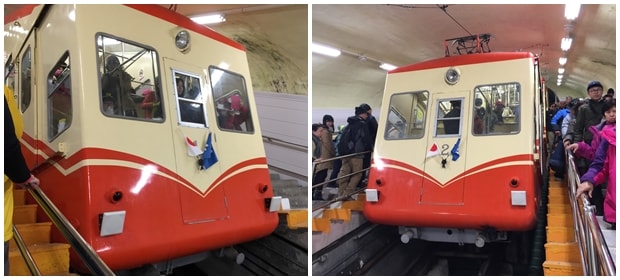
(6) Kurobe Lake Station and Kurobe Dam
6.1 Kurobe Lake Station
Kurobe Lake Station is the station connecting the Kurobe Cable Car from Kurobedaira. There are no other facilities inside the station.
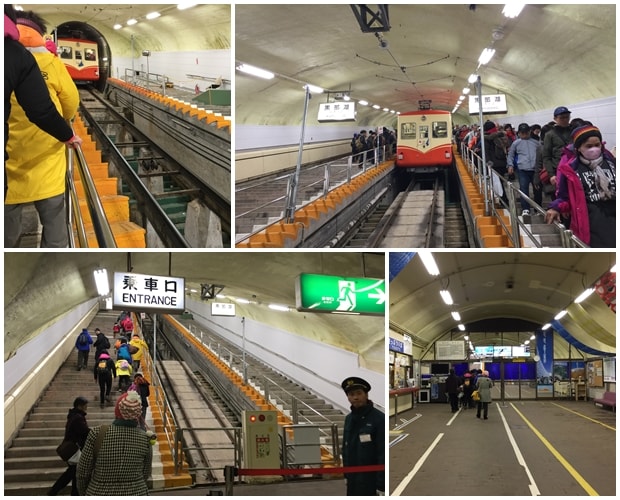
Kurobe Lake Station is built inside a tunnel. After getting off the train and walking out of the tunnel, you will reach Kurobe Dam.
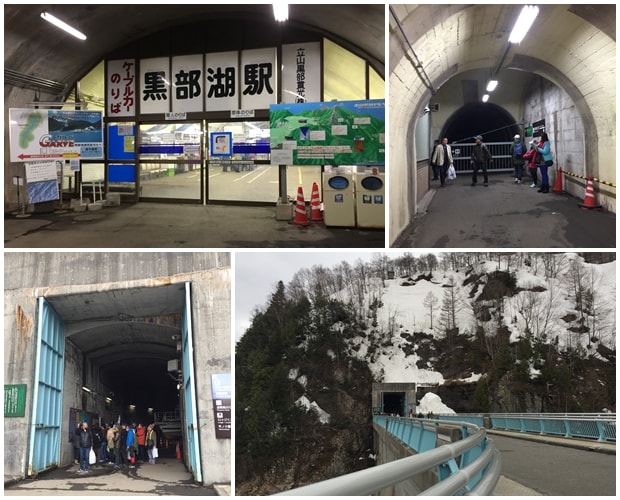
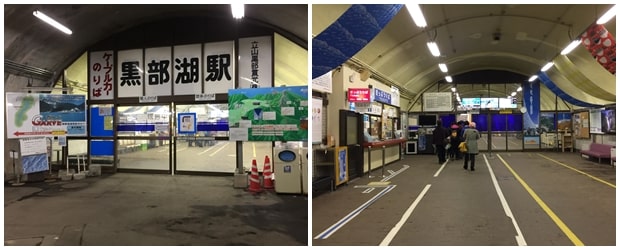
6.2 Kurobe Dam
Kurobe Dam is built on Kurobe Lake at an altitude of 1,500 meters. The dam is about 400 meters long, with Kurobe Lake Station on one side and Kurobe Dam Station on the other, where you can take the Kanden Tunnel Electric Bus.
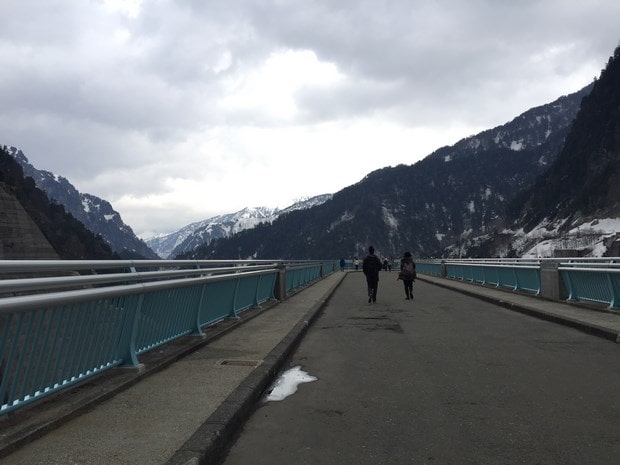
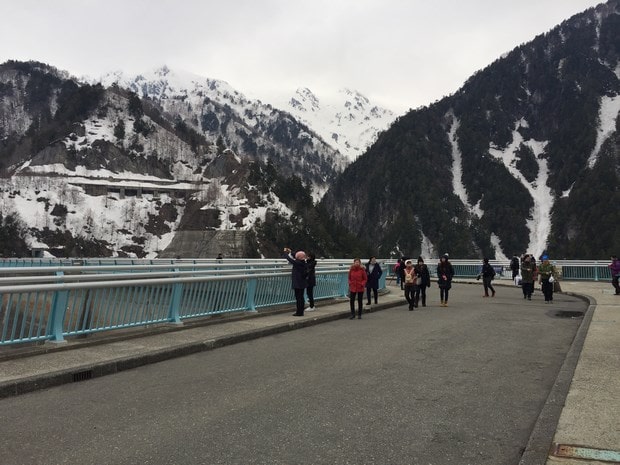
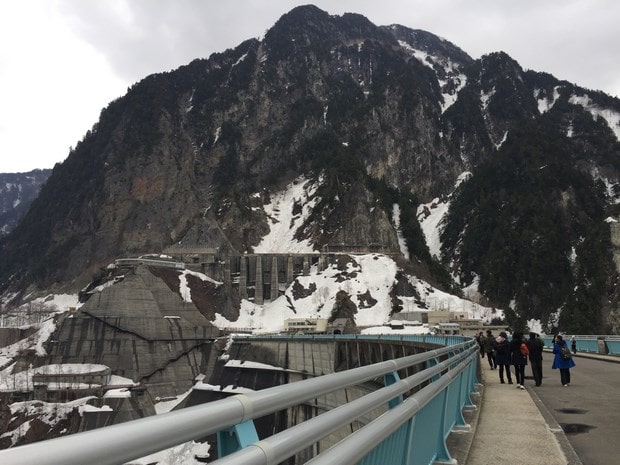
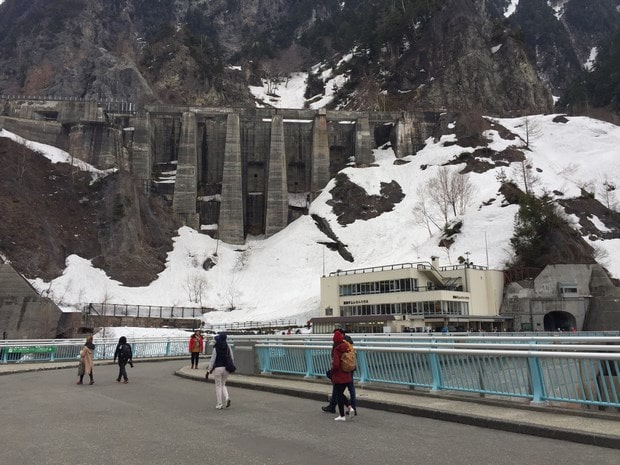
The lake below the dam, Kurobe Lake, is still partially frozen at the end of April, and the scenery will be completely different if you visit in the summer.
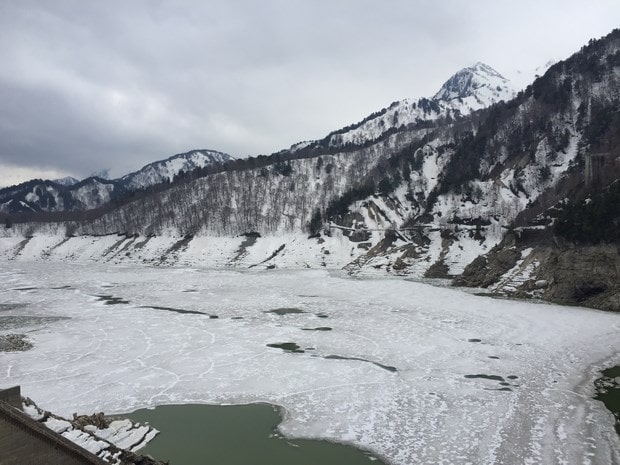
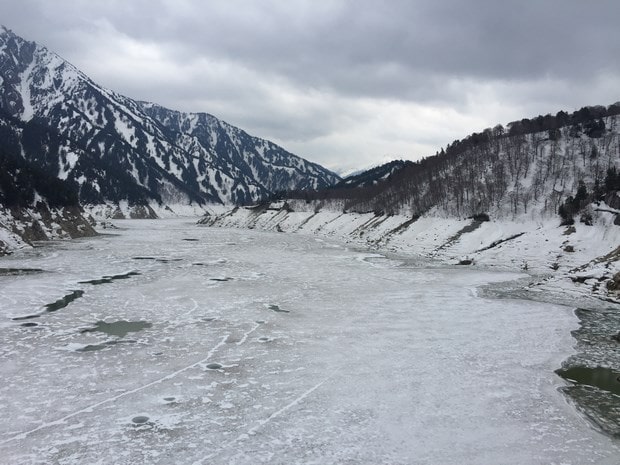
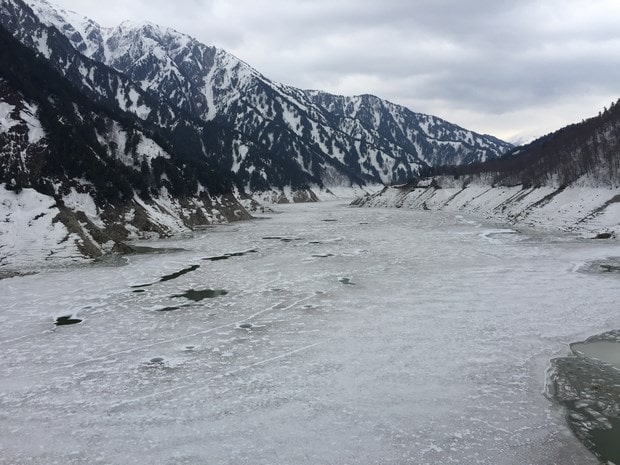
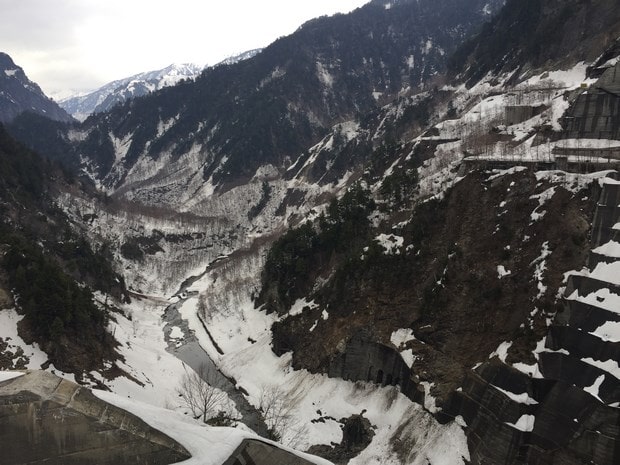
Near the Kurobe Dam Station, there is a rest area with food shops, and a rooftop observatory that offers a high vantage point to view the Kurobe Dam and Kurobe Lake.
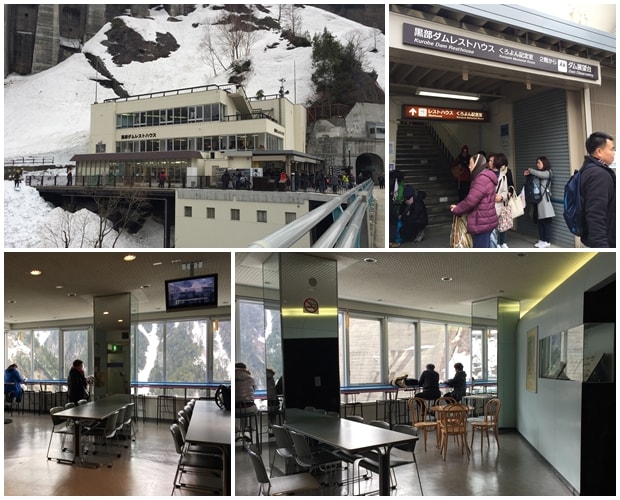
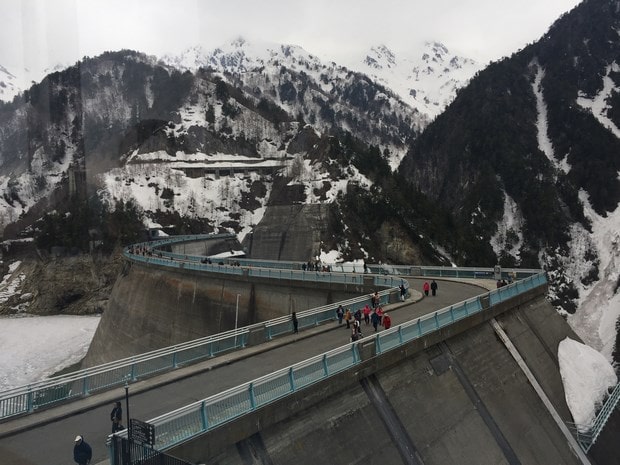
From the rest area, a small path leads to a higher observatory and a new dam observatory where you can get a close view of the dam’s water discharge. However, in April, the path may still be closed due to snow clearing. If you skip the dam observatory, a visit to Kurobe Dam takes about 45 minutes, but if you include the observatory, it will take an additional 30 minutes.
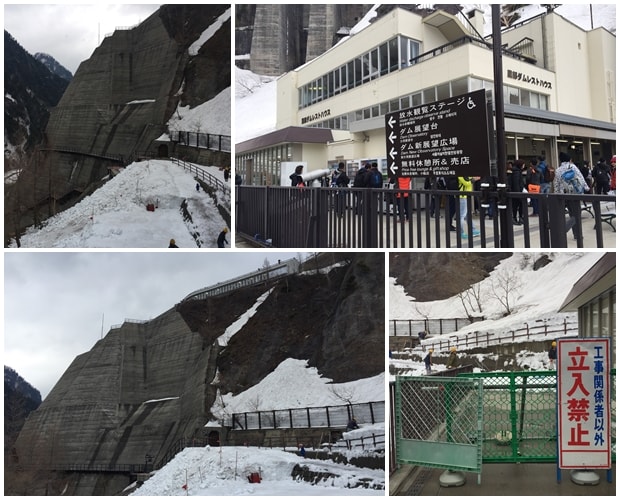
Tip: There is also a path from the Kurobe Dam Station of the Kanden Tunnel Electric Bus that leads to the dam observatory. From the station, it’s only 220 steps, compared to nearly 400 steps from the rest area. Below is a guide map of the surroundings of Kurobe Dam:
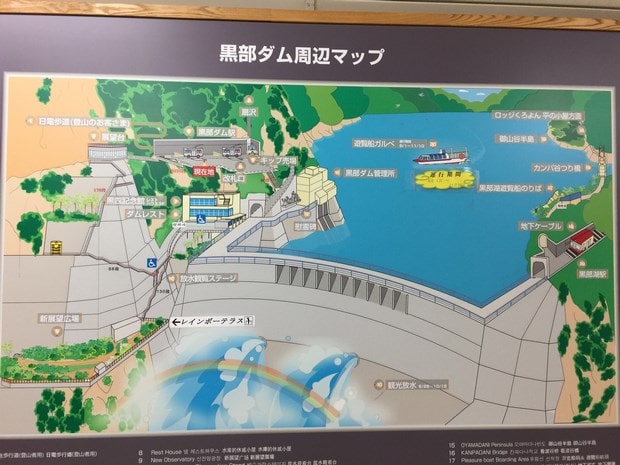
(7) Kurobe Dam Station and Kanden Tunnel Electric Bus
7.1 Kurobe Dam Station
Kurobe Dam Station is the station for the Kanden Tunnel Electric Bus that connects to Ogizawa. The station is also built inside a tunnel. The entrance to Kurobe Dam Station is next to the rest area near the dam, but it takes about 5 minutes to walk from the entrance to the station, including some stairs, making it one of the more strenuous parts of the Tateyama Kurobe Alpine Route.
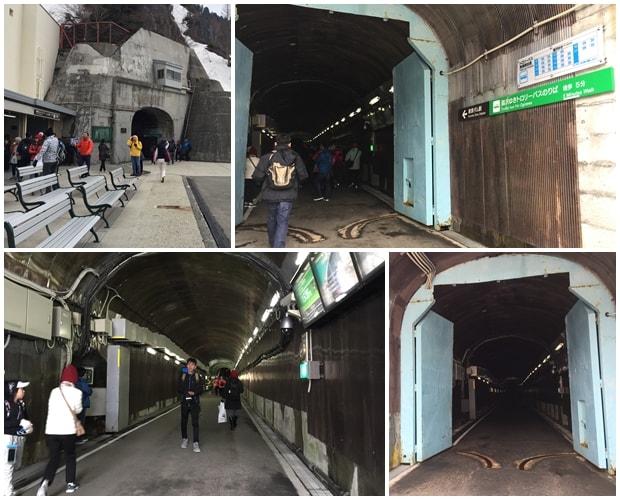
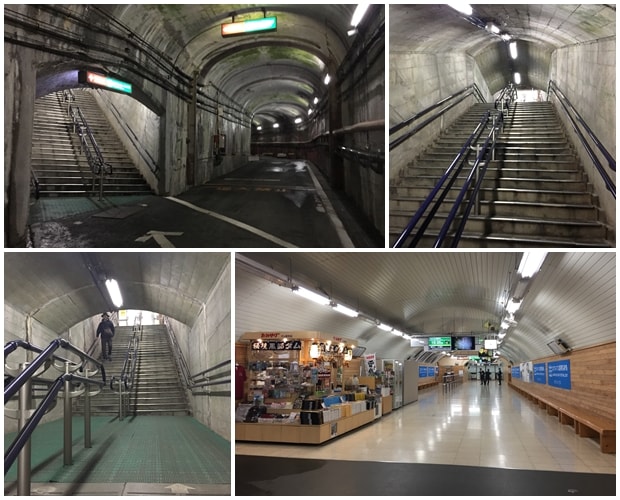
The gate for boarding the Kanden Tunnel Electric Bus inside Kurobe Dam Station.
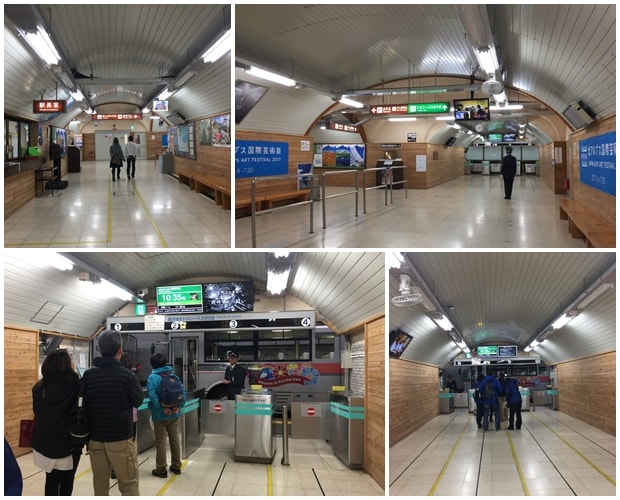
From Kurobe Dam Station, you can also access the dam observatory. Since the station is at a higher elevation, it only takes 220 steps to reach the observatory, half the number of steps compared to starting from the dam rest area.
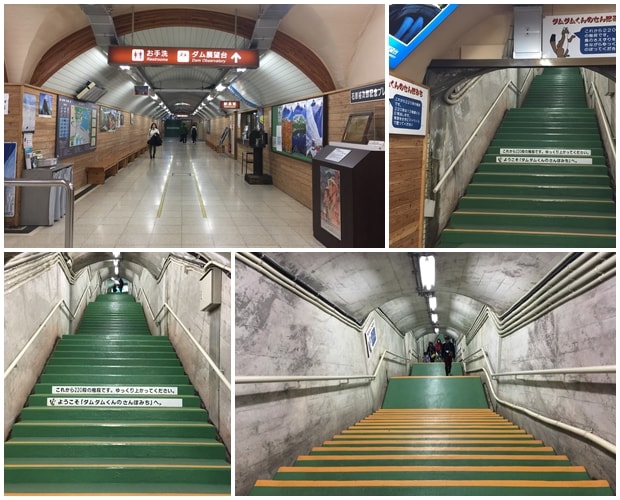
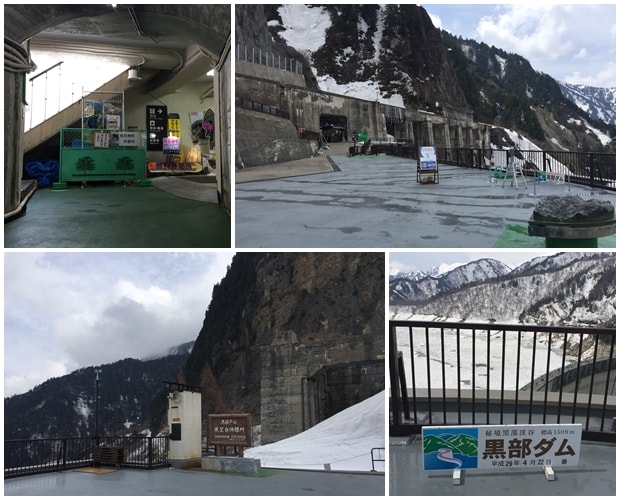
From the dam observatory, you can enjoy a different perspective of Kurobe Dam and Kurobe Lake, making the effort worthwhile.
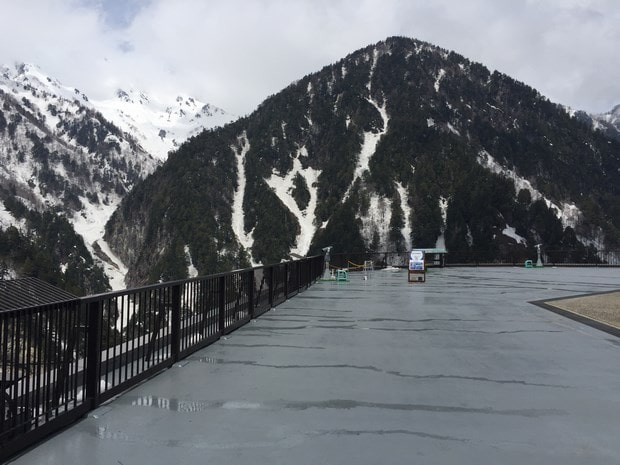
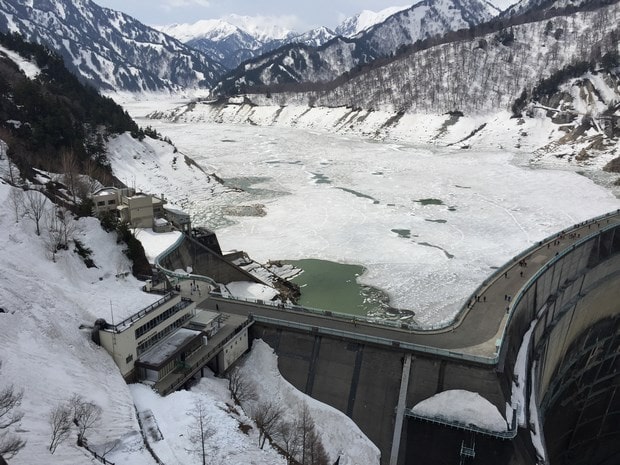
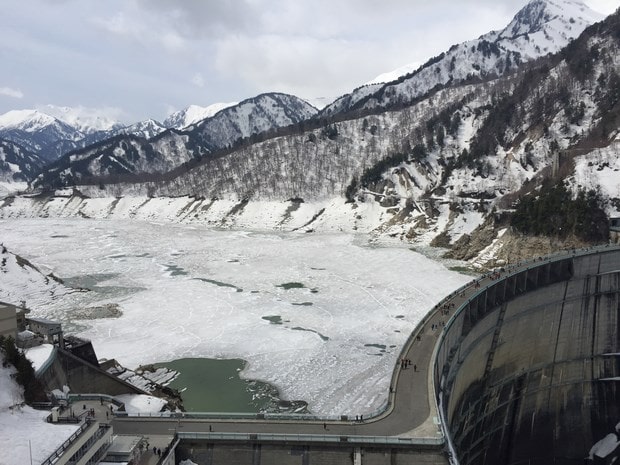
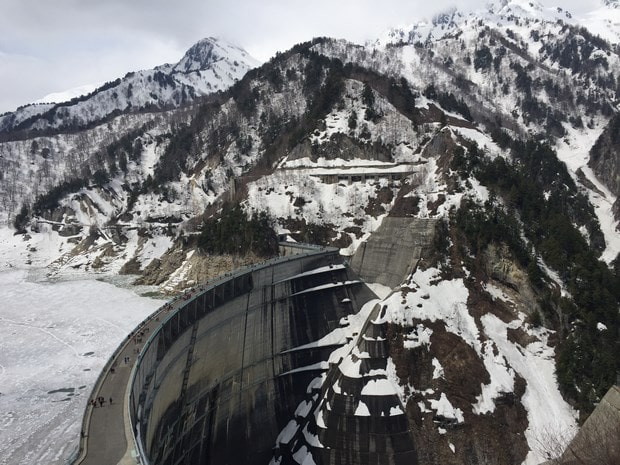
7.2 Kanden Tunnel Electric Bus
Similar to the Tateyama Tunnel, the Kanden Tunnel used trolley buses that did not emit exhaust until 2019, when they were replaced by electric buses.
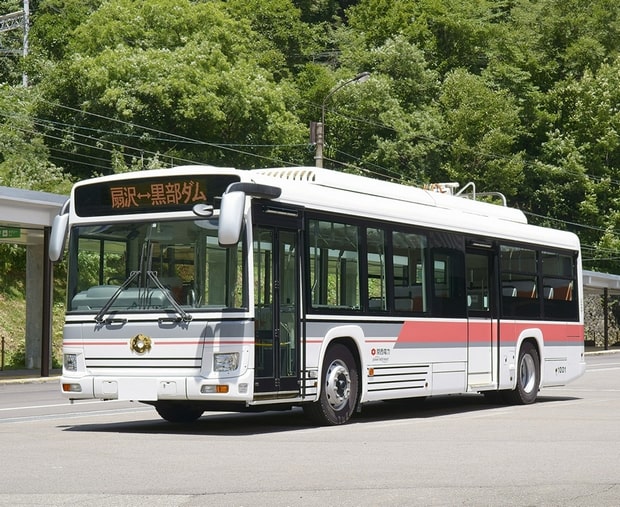
Note: Photo from the official website
Below is a description of the Kanden Tunnel Trolley Bus I took in 2017. The Kanden Tunnel Trolley Bus is similar to the Tateyama Tunnel Trolley Bus, as it also does not emit exhaust and operates inside a tunnel, but it emerges above ground near Ogizawa. The Kanden Tunnel is longer than the Tateyama Tunnel, at 6.1 kilometers, and it takes about 16 minutes to travel from Kurobe Dam Station to Ogizawa. According to the official website’s timetable, the Kanden Tunnel Trolley Bus departs every half hour, but four buses usually depart simultaneously, so there is enough capacity for waiting passengers, although you may have to stand during peak times.
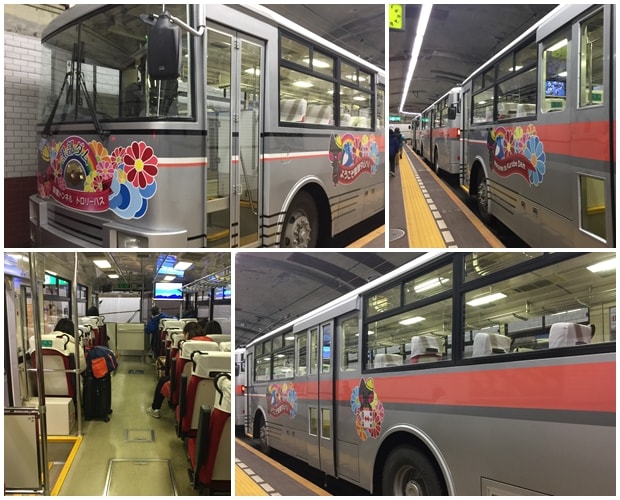
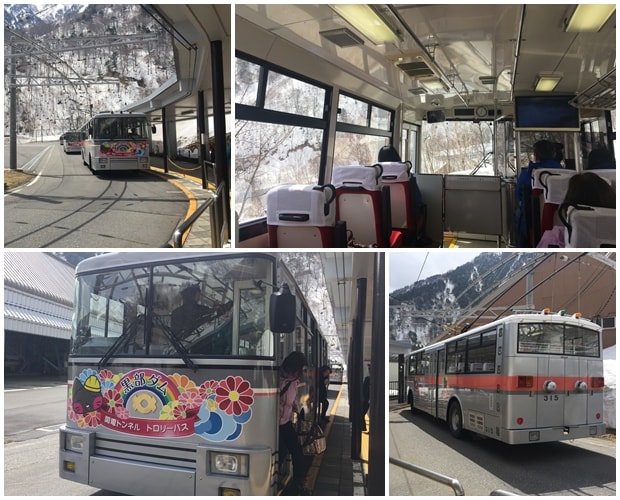
(8) Ogizawa Station and Ogizawa to Shinano-Omachi Bus
8.1 Ogizawa Station
Ogizawa Station is the starting point of the Tateyama Kurobe Alpine Route on the Nagano side. While most foreign tourists start their journey from Tateyama Station, many Japanese from the Kanto region or foreign tourists coming from Tokyo choose to start from Ogizawa, so the station can also be crowded during peak seasons.
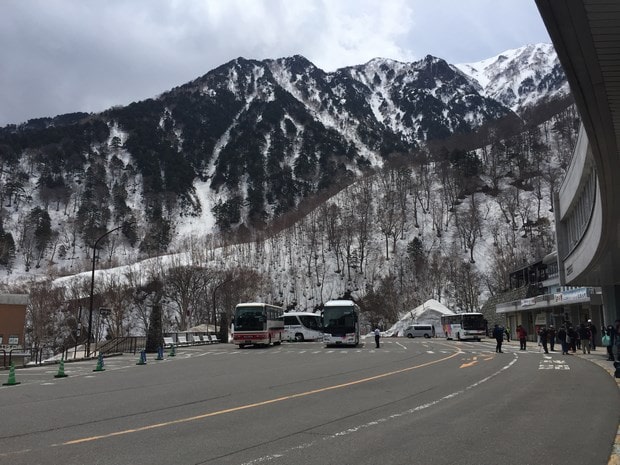
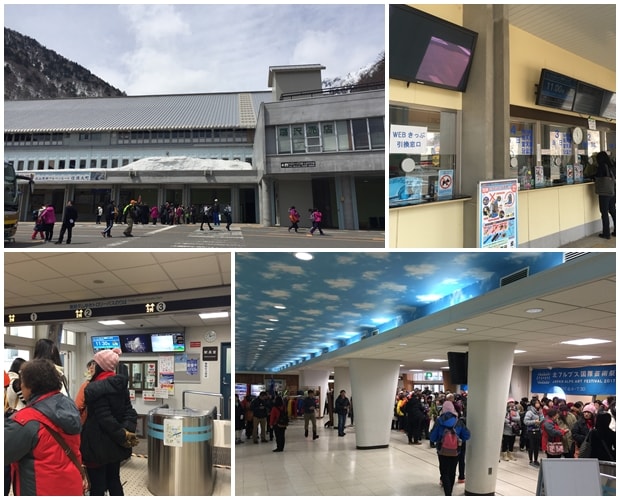
Similar to Tateyama Station, to control the number of passengers, you need to purchase a ticket with a designated boarding time for the Kanden Tunnel Electric Bus departing from Ogizawa. However, if you have purchased the “Alpine-Takayama-Matsumoto Area Tourist Pass“, which allows unlimited rides on the Tateyama Kurobe Alpine Route within its validity period, and you are starting from Ogizawa, you only need to present the pass to board the Kanden Tunnel Electric Bus without a designated time. You also do not need to exchange a boarding ticket at Ogizawa Station; the exchange location is at the next station, Kurobe Lake Station.
There are many parking lots outside Ogizawa Station, both paid and free.
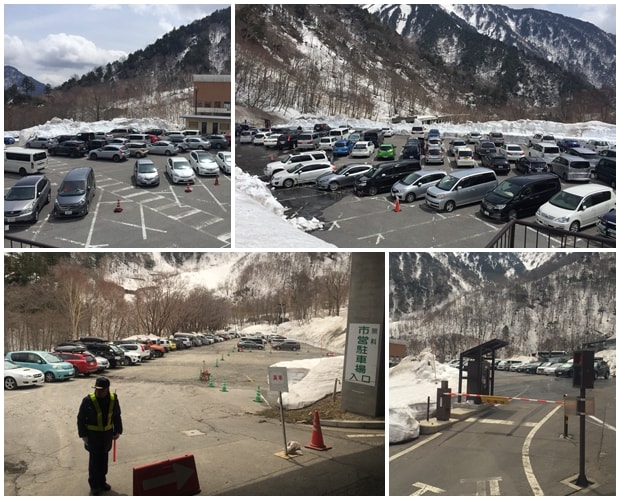
8.2 Ogizawa to Shinano-Omachi Bus
From Ogizawa Station, there are buses to the nearest JR station, Shinano-Omachi, as well as buses directly to cities like Matsumoto and Nagano. If you have purchased the “Alpine-Takayama-Matsumoto Area Tourist Pass“, the pass includes the bus from Ogizawa Station to Shinano-Omachi. If you do not have the pass, you can purchase tickets at the ticket office in front of the bus stop.
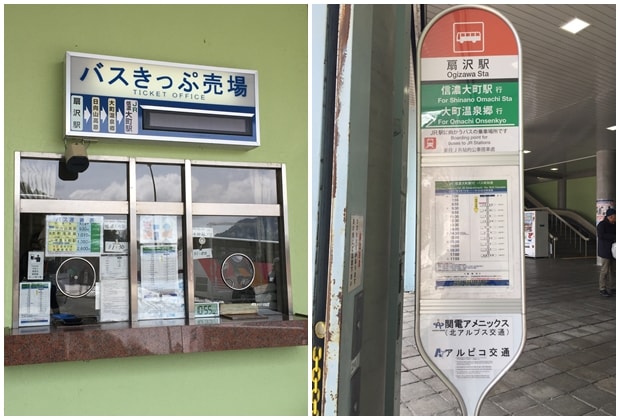
The bus from Ogizawa Station to Shinano-Omachi runs approximately once an hour, but the departure times may vary on different days. For the detailed bus schedule, please refer to this webpage.
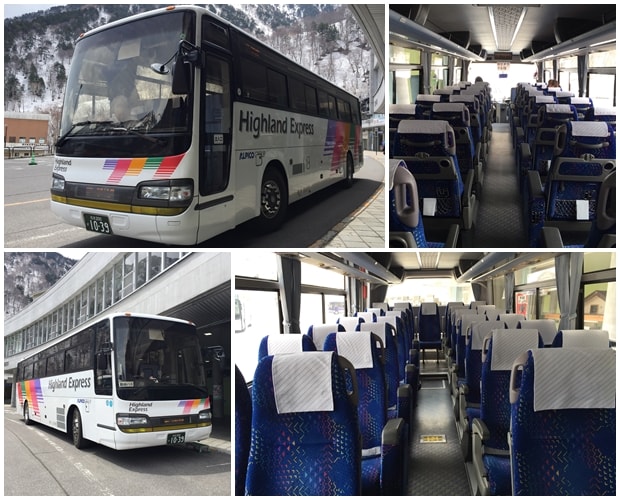
The bus from Ogizawa Station to Shinano-Omachi stops at Omachi Onsen, with the final stop at JR Shinano-Omachi Station.
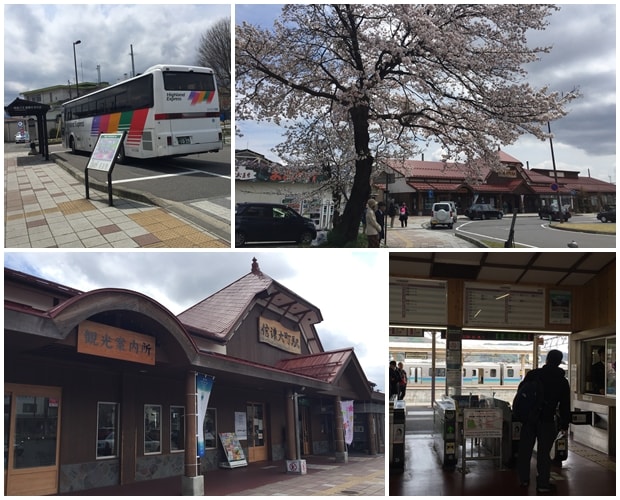
(9) Toyama Station and Toyama Chihou Railway
9.1 Toyama Station
Toyama City is the nearest major city to Tateyama Station, located approximately 30 kilometers away. Therefore, many tourists traveling to Tateyama Kurobe by public transportation choose Toyama City as their starting point. They often stay overnight in Toyama City and take the Toyama Chihou Railway (abbreviated as Toyama Dentetsu or Toyama Electric Railway) to Tateyama Station early the next morning to begin their journey along the Tateyama Kurobe Alpine Route.
The starting point of the Toyama Chihou Railway Tateyama Line in Toyama City is Toyama Station, the gateway to the city. It is also the location of JR Toyama Station. Whether you arrive by JR train or express bus, you will disembark at Toyama Station, with the Toyama Chihou Railway Toyama Station located right next to JR Toyama Station.
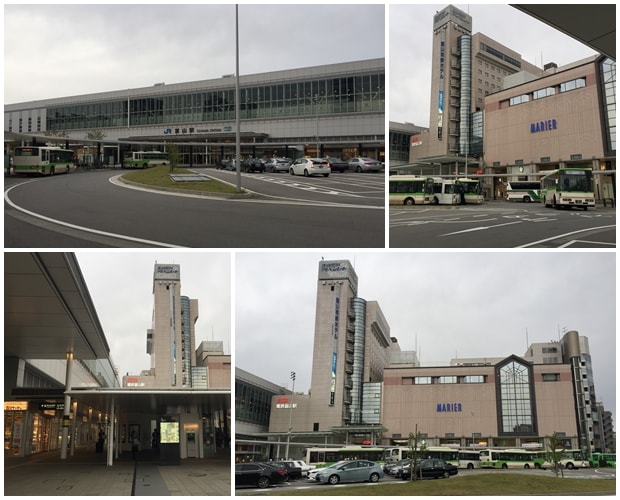
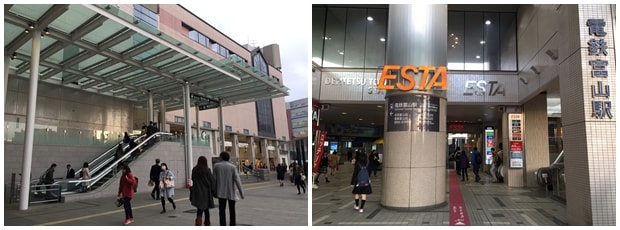
Toyama Chihou Railway Toyama Station (abbreviated as Dentetsu Toyama) is relatively small. The station has coin-operated lockers, and there is a temporary counter for luggage handling services before 9:50 AM.
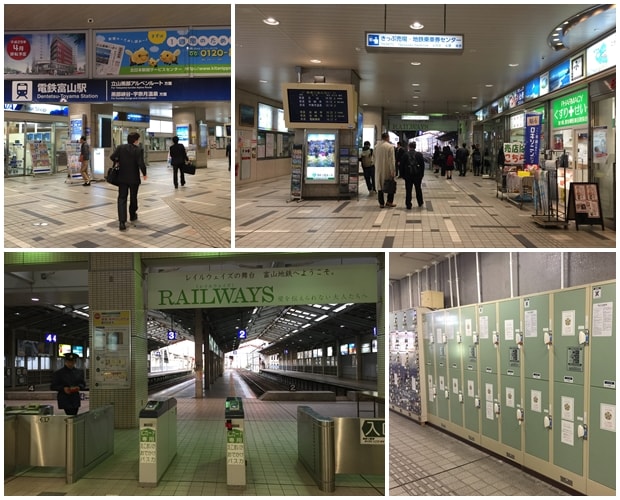
There is only one ticket window at Toyama Chihou Railway Toyama Station for handling ticket sales and exchanging boarding passes for the Tateyama Kurobe Alpine Route. During the busy morning hours, there is often a queue, so it is advisable to arrive early to purchase tickets or exchange boarding passes. If you have purchased the “Alpine-Takayama-Matsumoto Area Tourist Pass” or have bought tickets online, you will still need to exchange your boarding pass at the ticket window and select your boarding time for the Tateyama Cable Car.
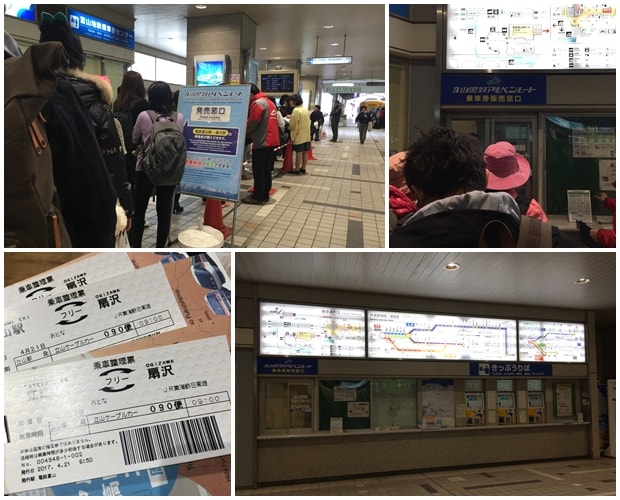
9.2 Toyama Chihou Railway
Toyama Chihou Railway is the main transportation system in Toyama Prefecture, with multiple lines. In addition to the Tateyama Line, which terminates at Tateyama Station, the Toyama Chihou Main Line, which ends at Uozu Onsen, is also popular among tourists. Toyama Chihou Railway mainly operates local and express trains. Since the railway passes through many residential areas, local trains stop at many stations, while express trains stop at fewer stations.
The local train on the Toyama Chihou Railway Tateyama Line stops at 20 stations, while the express train stops at only 5 stations. The express train takes about 50 minutes from Toyama Station to Tateyama Station, while the local train takes about 70 minutes. Between December and mid-April, the frequency of trains on the Toyama Dentetsu Tateyama Line is low, but from April 15 to November 30, during the Tateyama Kurobe opening period, the frequency of trains increases.
Below is the weekday timetable for the Toyama Chihou Railway Tateyama Line from Toyama Station to Tateyama Station: (Note: The image below shows the timetable from previous years. Please use the link below to check the latest timetable.)
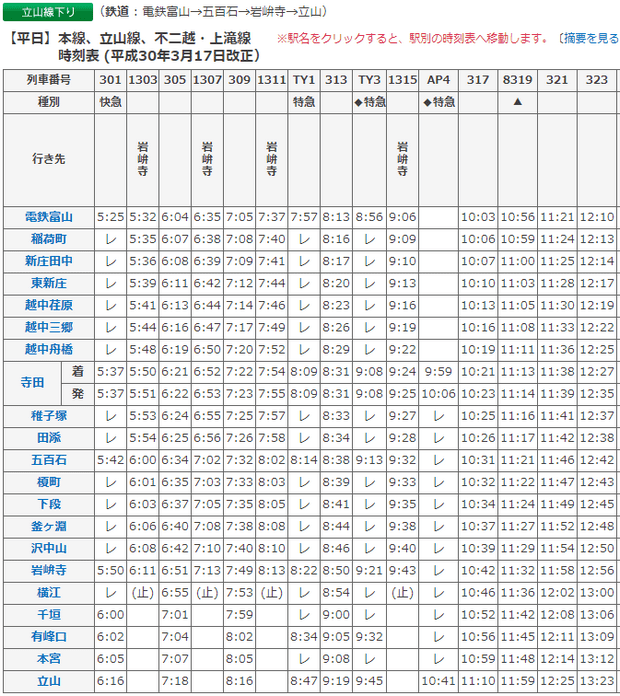
Below is the weekend and Japanese holiday timetable for the Toyama Chihou Railway Tateyama Line from Toyama Station to Tateyama Station: (Note: The image below shows the timetable from previous years. Please use the link below to check the latest timetable.)
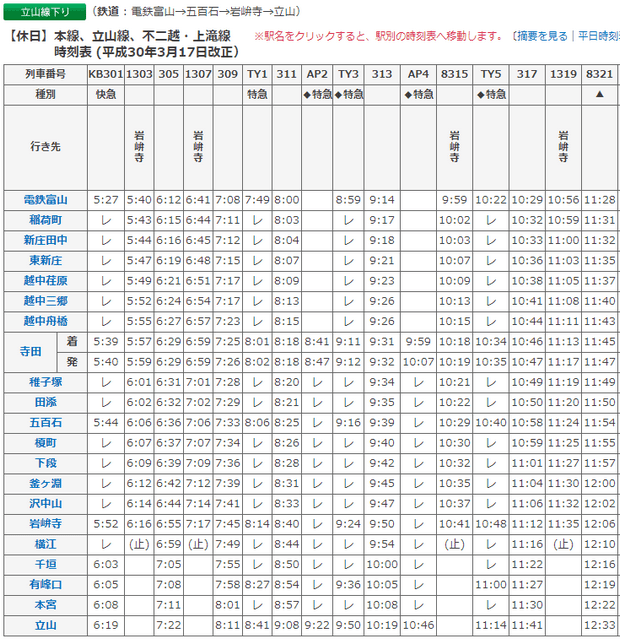
The detailed timetable for the Toyama Chihou Railway Tateyama Line can be found on the Toyama Chihou Railway or the Tateyama Kurobe Alpine Route official website at the following links:
- Toyama Chihou Railway Tateyama Line Timetable from Toyama Station to Tateyama Station (Weekdays)
- Toyama Chihou Railway Tateyama Line Timetable from Toyama Station to Tateyama Station (Weekends and Japanese Holidays)
- Toyama Chihou Railway Tateyama Line Timetable from Tateyama Station to Toyama Station (Weekdays)
- Toyama Chihou Railway Tateyama Line Timetable from Tateyama Station to Toyama Station (Weekends and Japanese Holidays)
- Toyama Chihou Railway Tateyama Line Timetable from Toyama Station to Tateyama Station (Tateyama Kurobe Alpine Route Official Website)
In addition to regular carriages, the Toyama Chihou Railway Tateyama Line also has a special carriage with limited seating, so be quick to board if you want a seat.
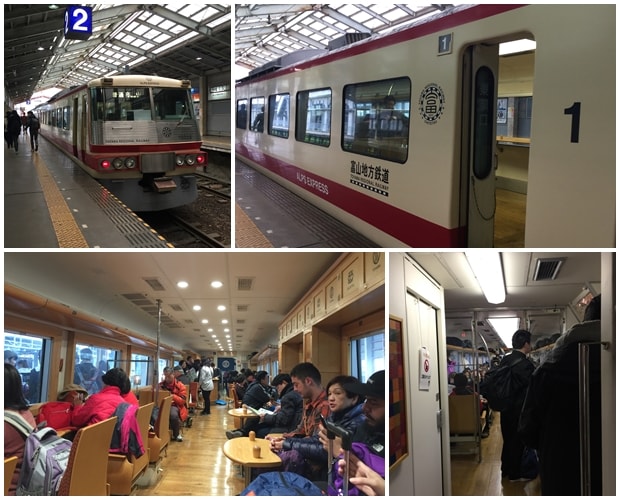
Toyama Chihou Railway Tateyama Station and the Tateyama Cable Car Tateyama Station are located in the same building. After exiting the platform of Toyama Chihou Railway Tateyama Station, take the stairs up one level to reach the waiting room for the Tateyama Cable Car Tateyama Station.
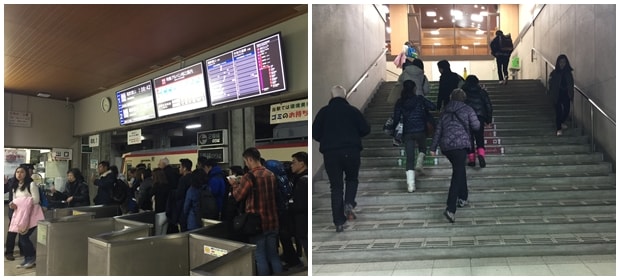
Related Links:
- Tateyama Kurobe Alpine Route Official Website
- Tateyama Kurobe Alpine Route Guidebook
- Tateyama Kurobe Snow Wall Map and Attraction Locations
- Tateyama Kurobe Alpine Route Transportation Guide and Travel Times
- Tateyama Kurobe Alpine Route Transportation Timetable
- Toyama Chihou Railway Timetable
- Ogizawa to Shinano-Omachi Bus Timetable
- Tateyama Kurobe Alpine Route Transportation Fares
- Tateyama Kurobe Alpine Route Ticket Purchase Guide
- Tateyama Kurobe Alpine Route Online Ticket Purchase
- Luggage Handling Service Information
- Tateyama Kurobe Daily Visitor Forecast
- Daily operation status of various transportation facilities in Tateyama Kurobe
- Real-time images of major locations in Tateyama Kurobe
- Tateyama Kurobe Station Facilities and Floor Plans
- Restaurants at Tateyama Kurobe Stations
- Tateyama Kurobe Alpine Route Seasonal Scenery
- Tateyama Kurobe Monthly Average Temperatures and Clothing Recommendations
- Tateyama Kurobe Alpine Route Official Tour Suggestions
- Alpine-Takayama-Matsumoto Area Tourist Pass
Related posts:
